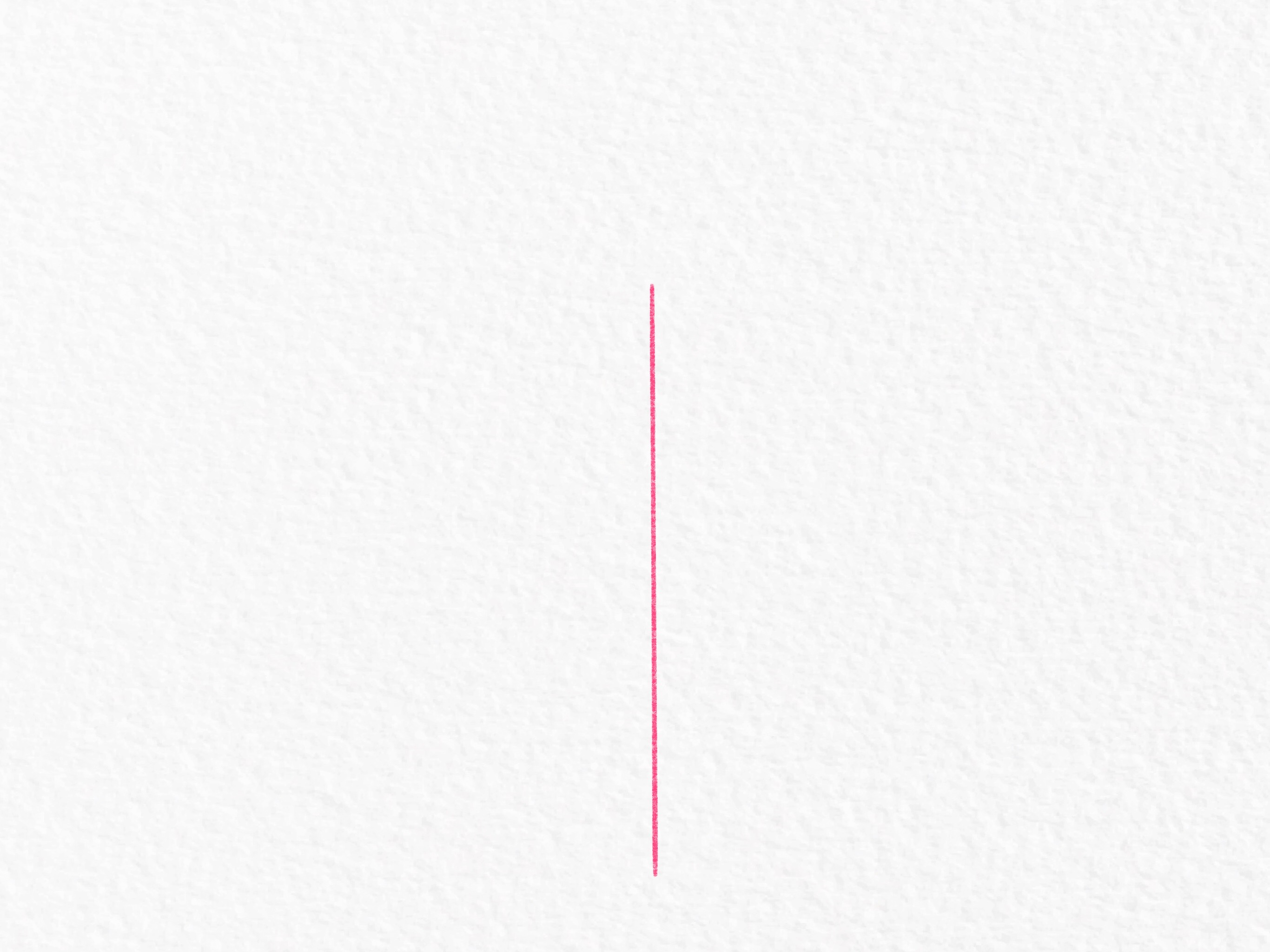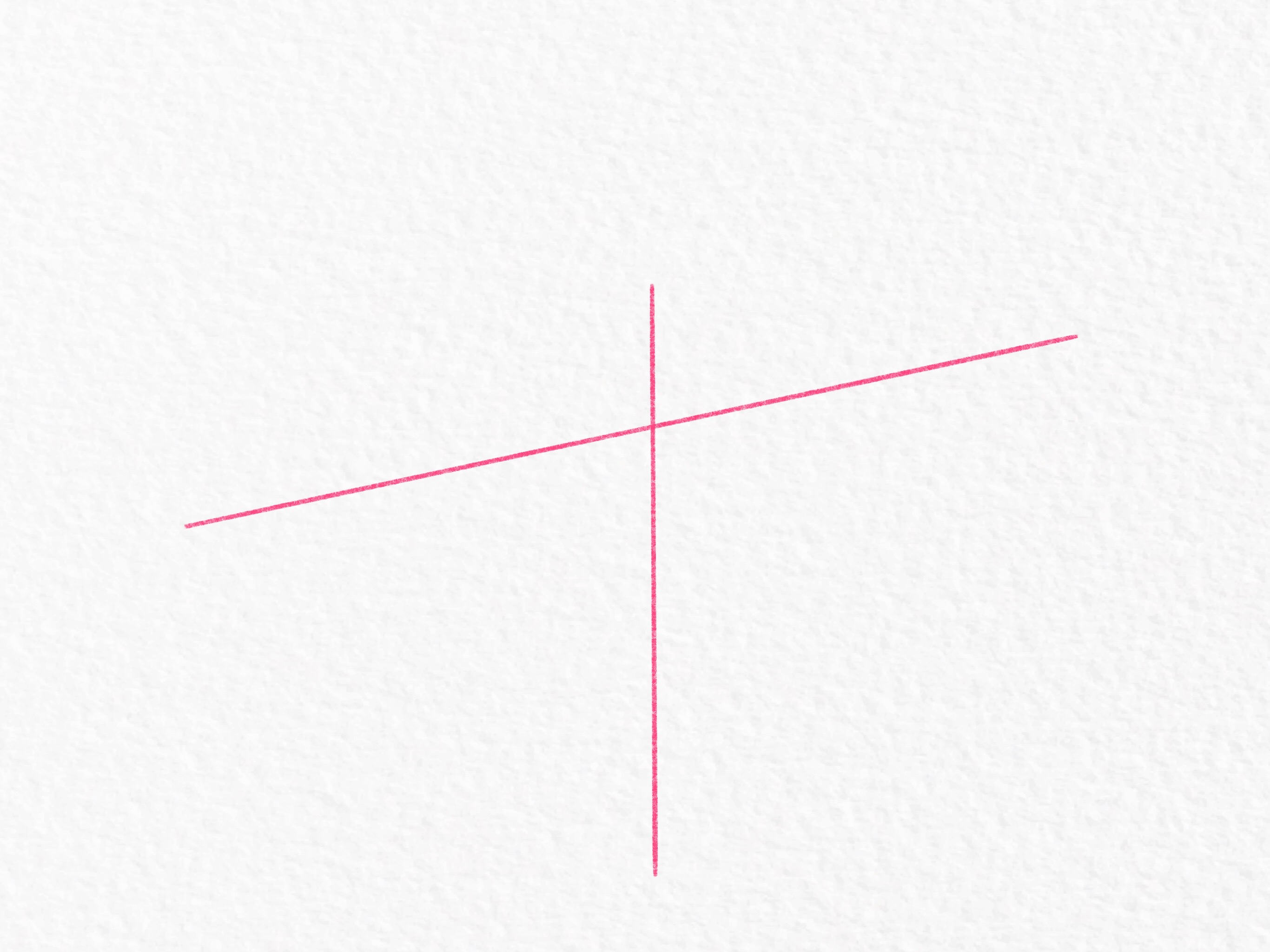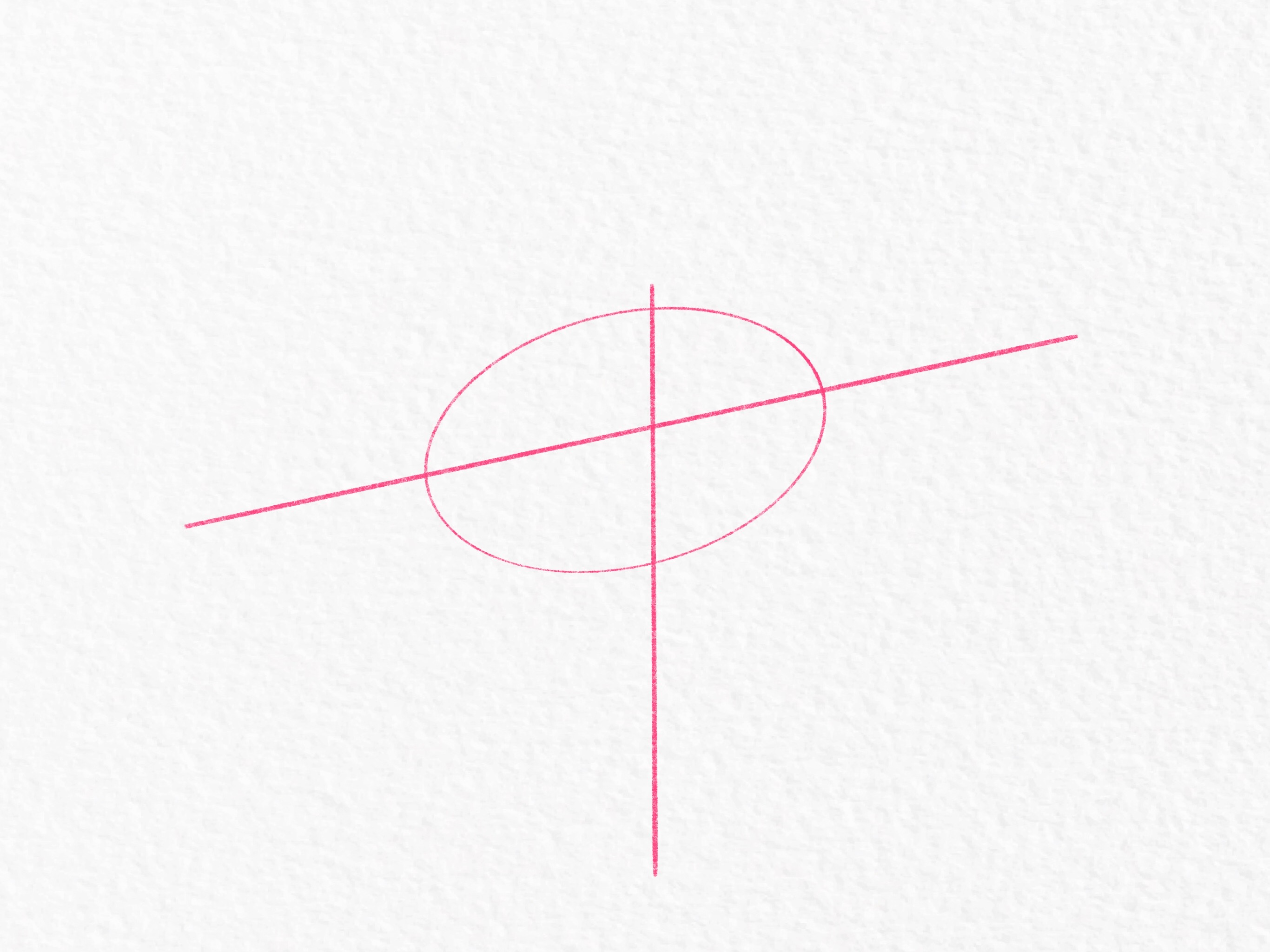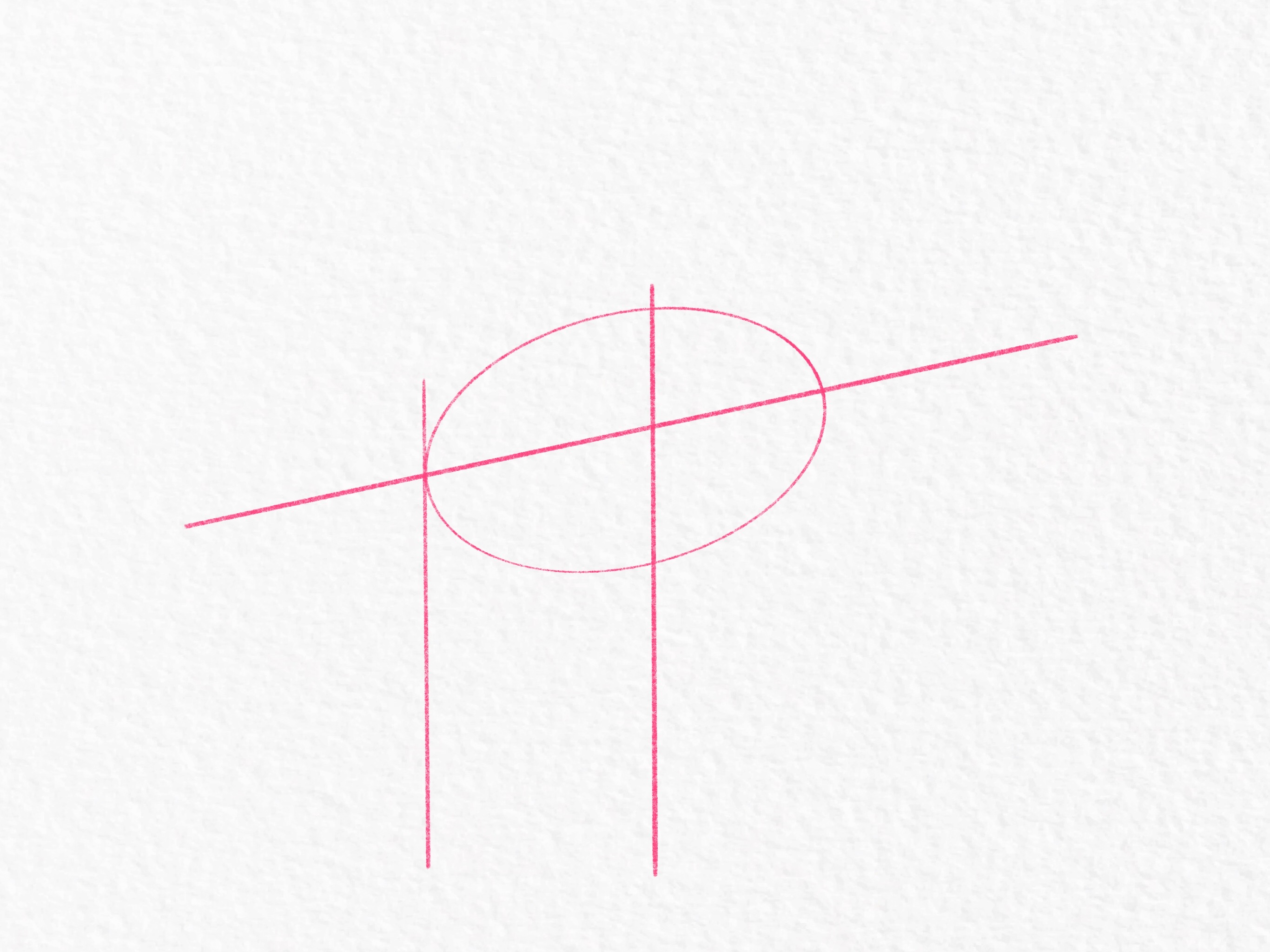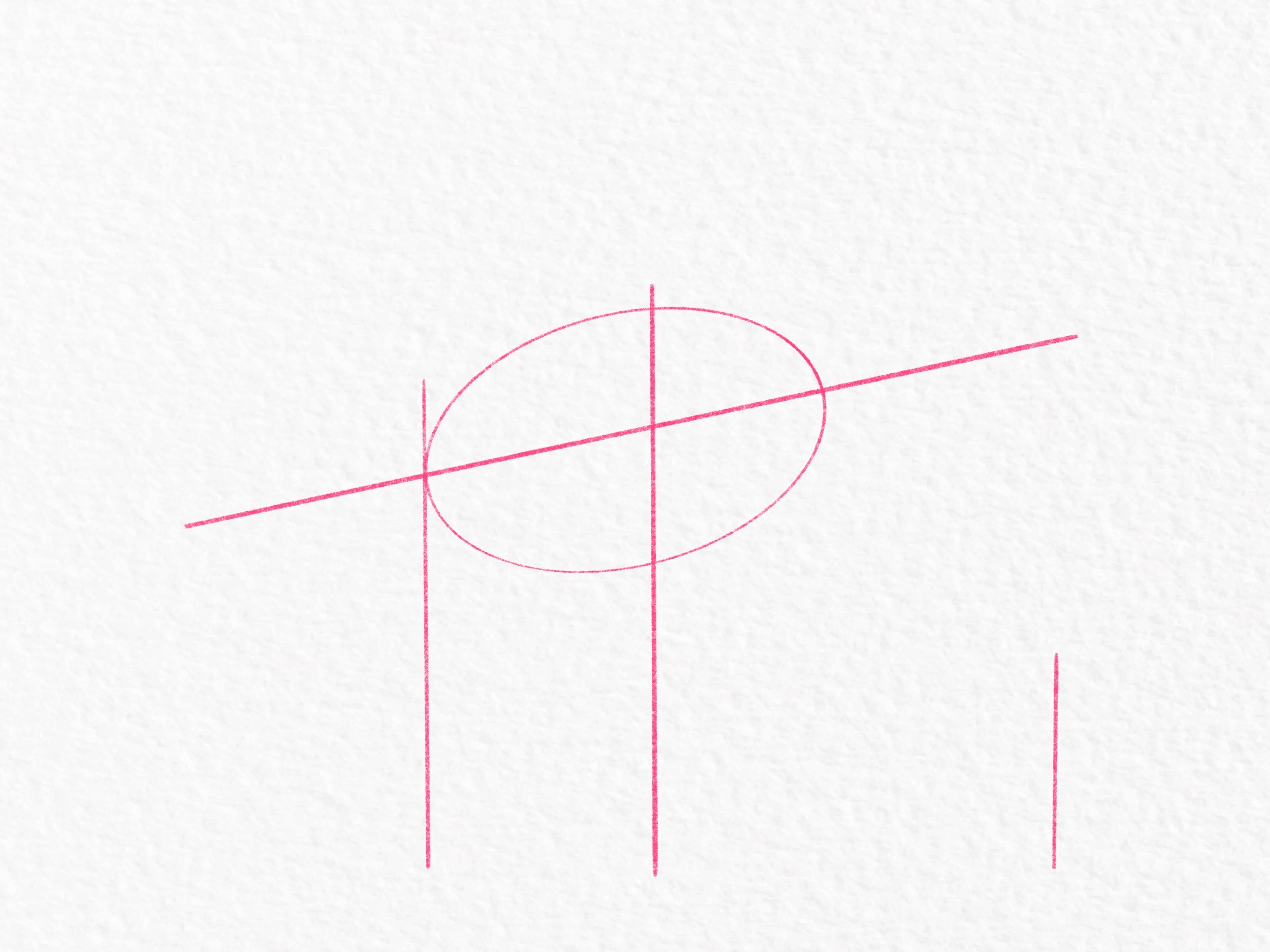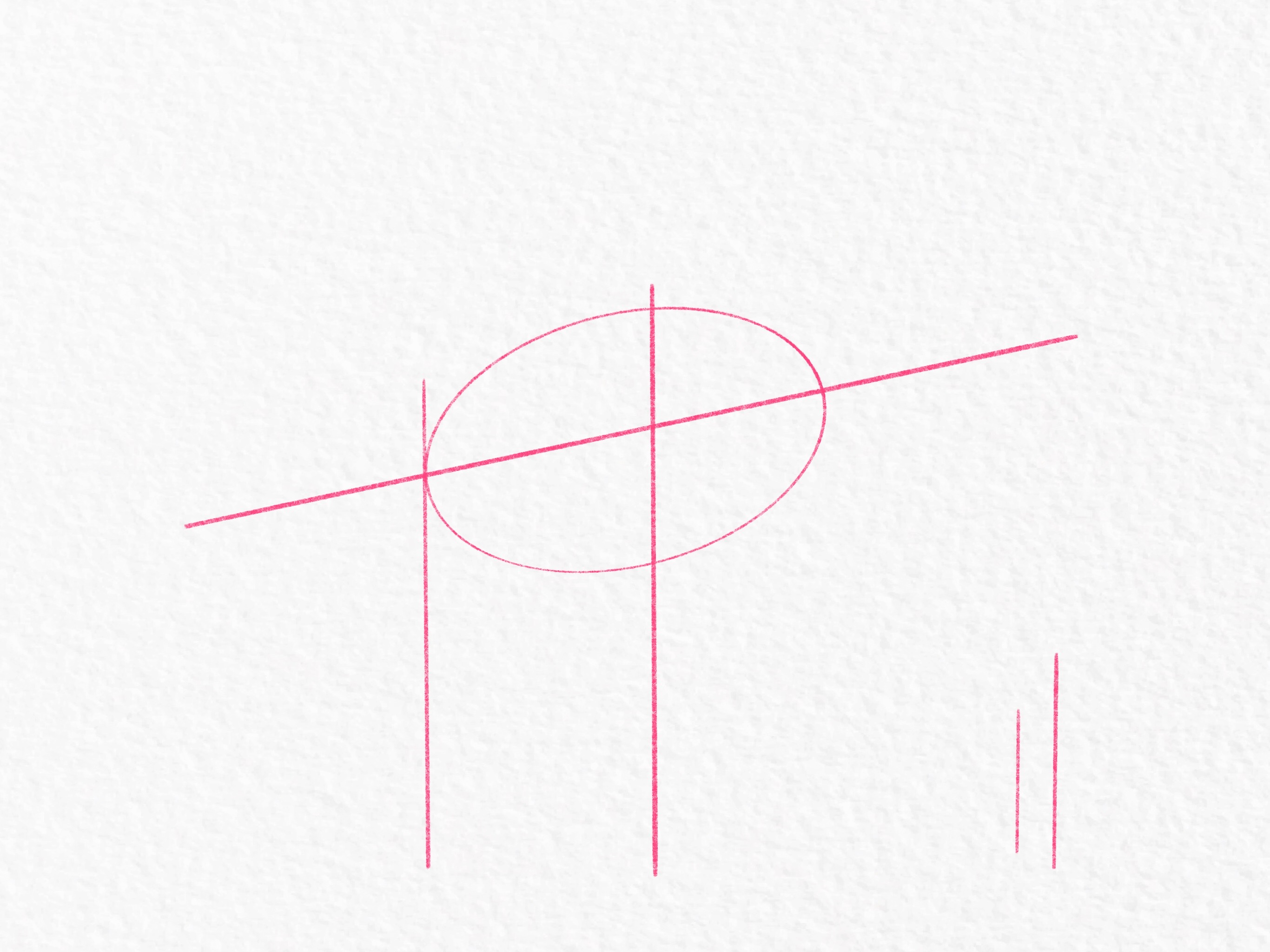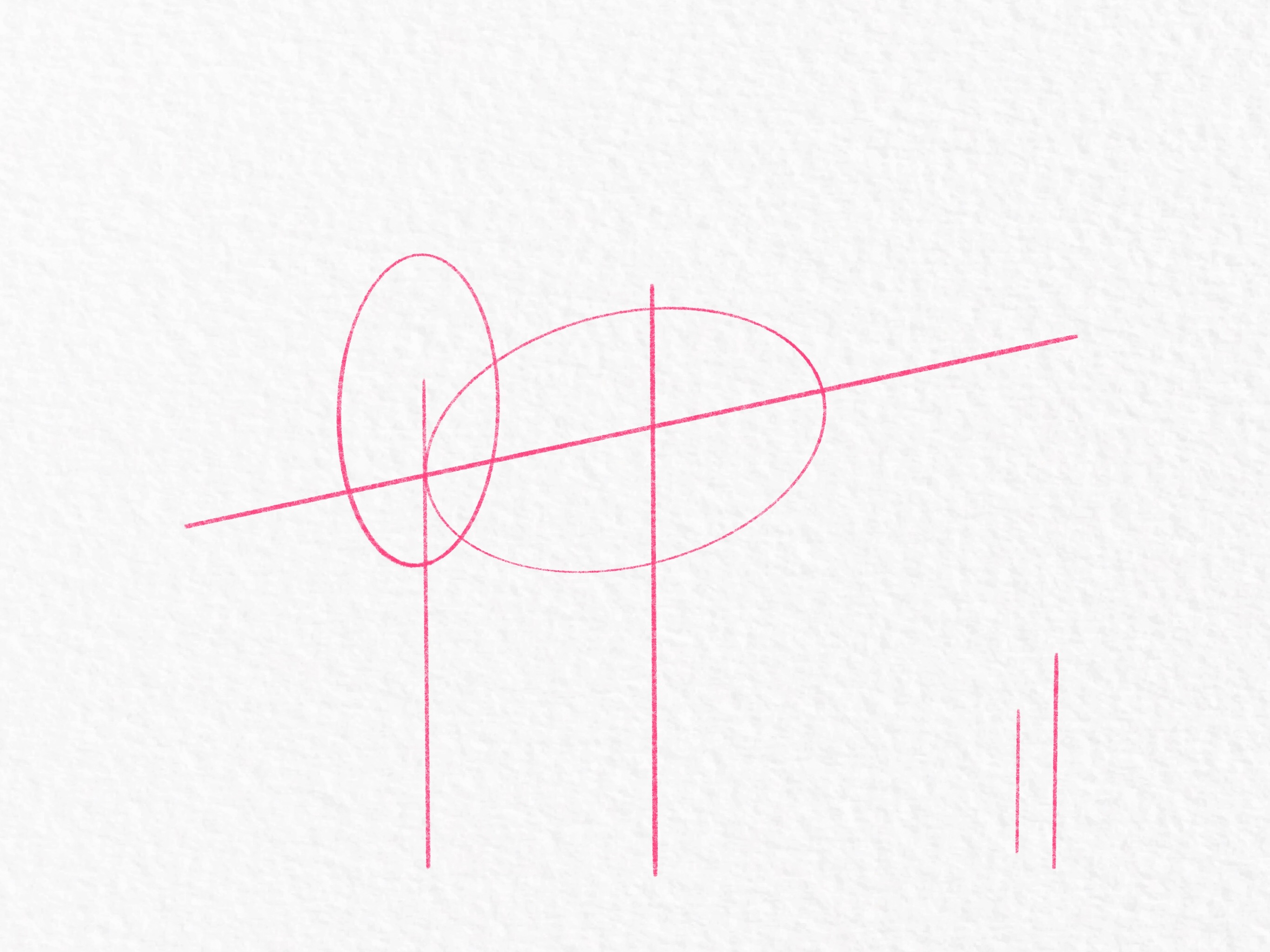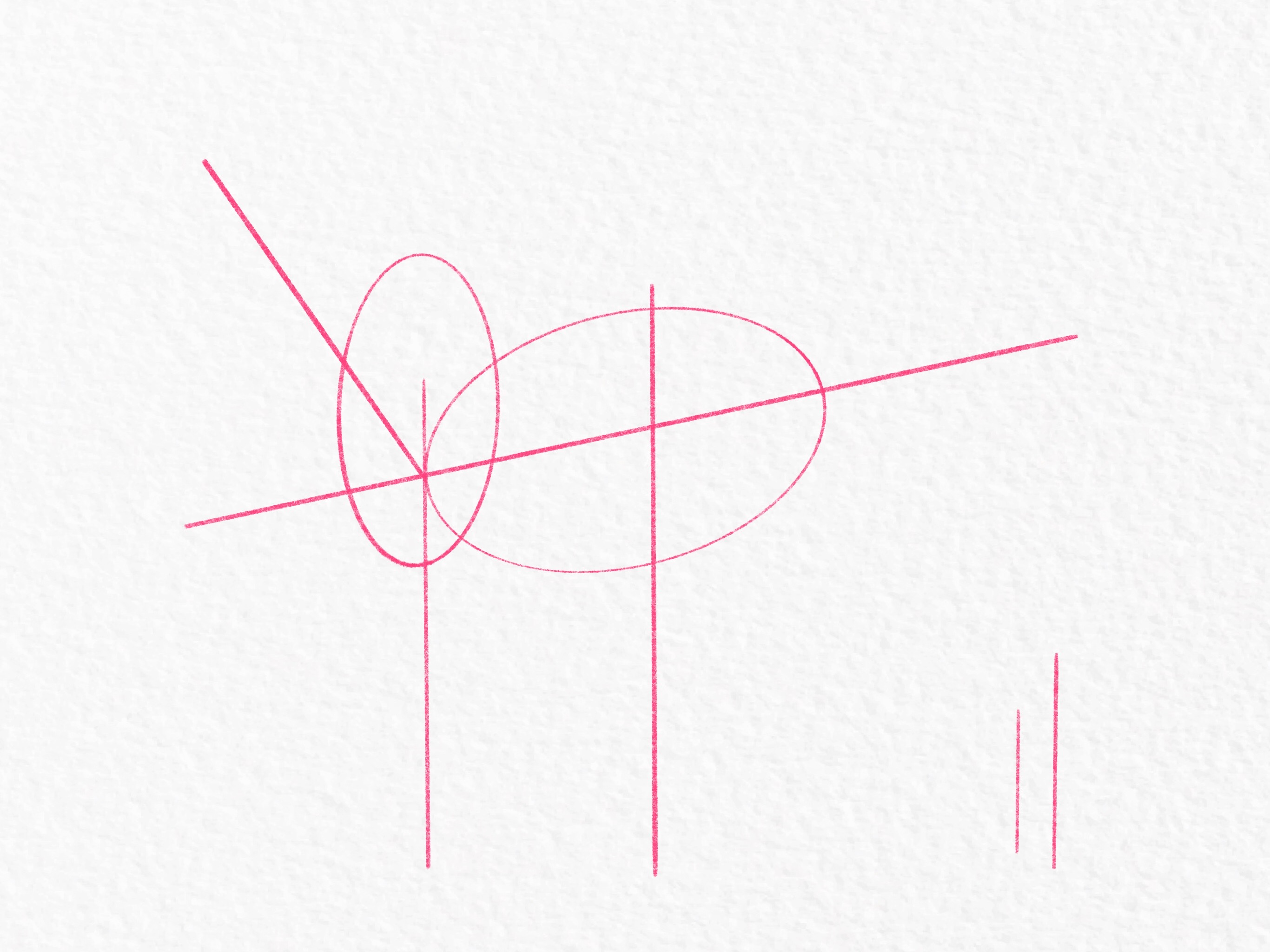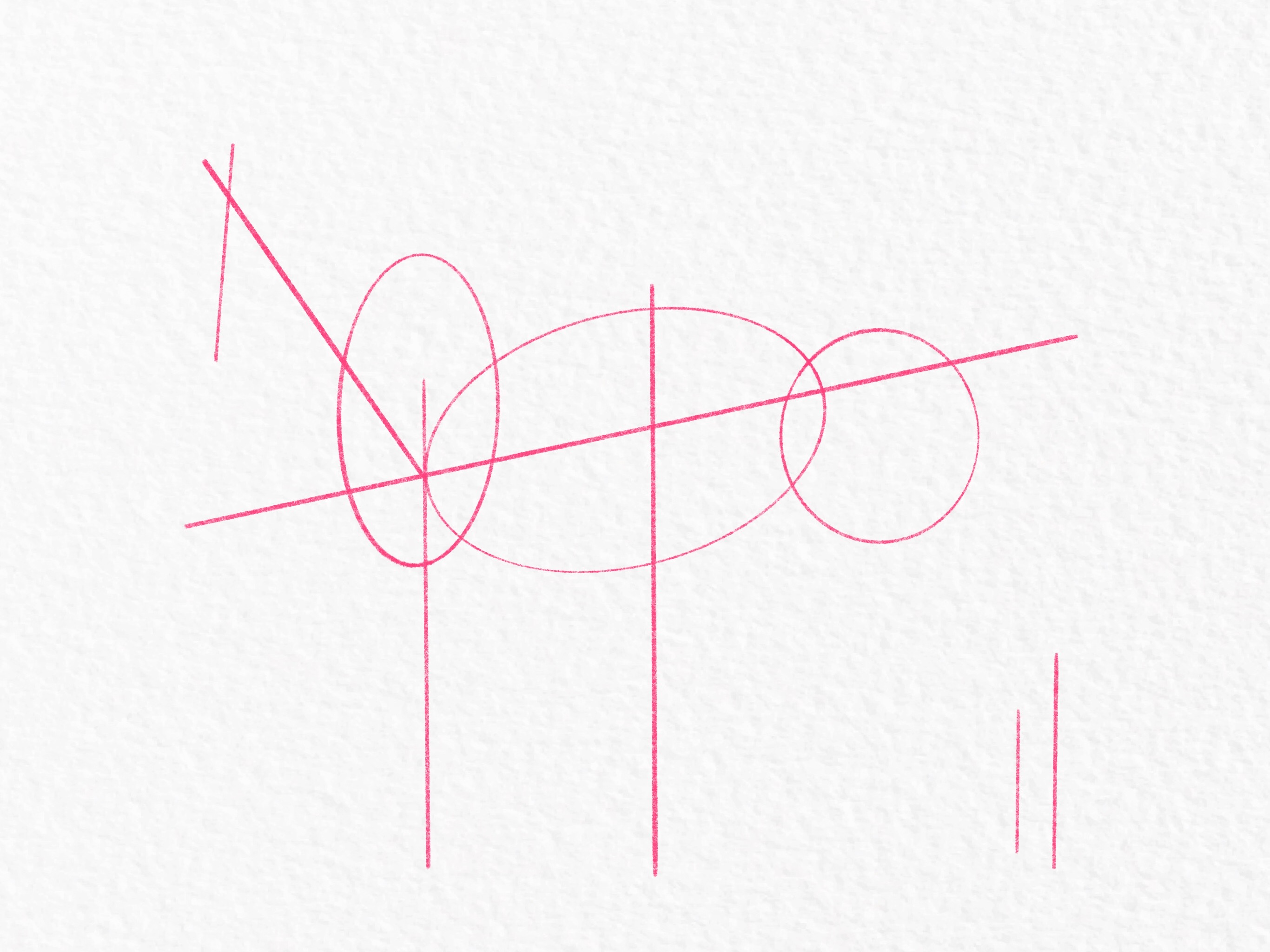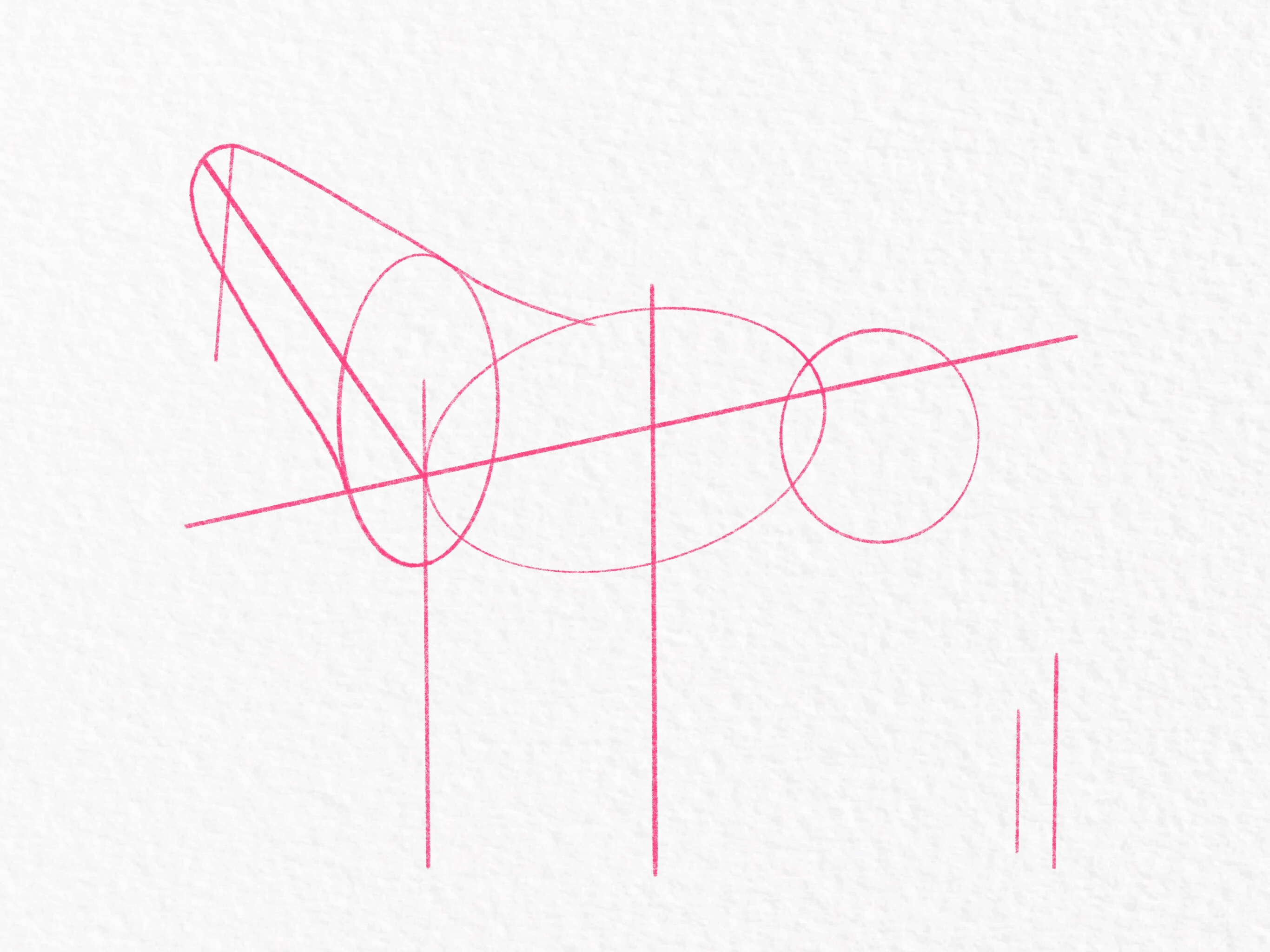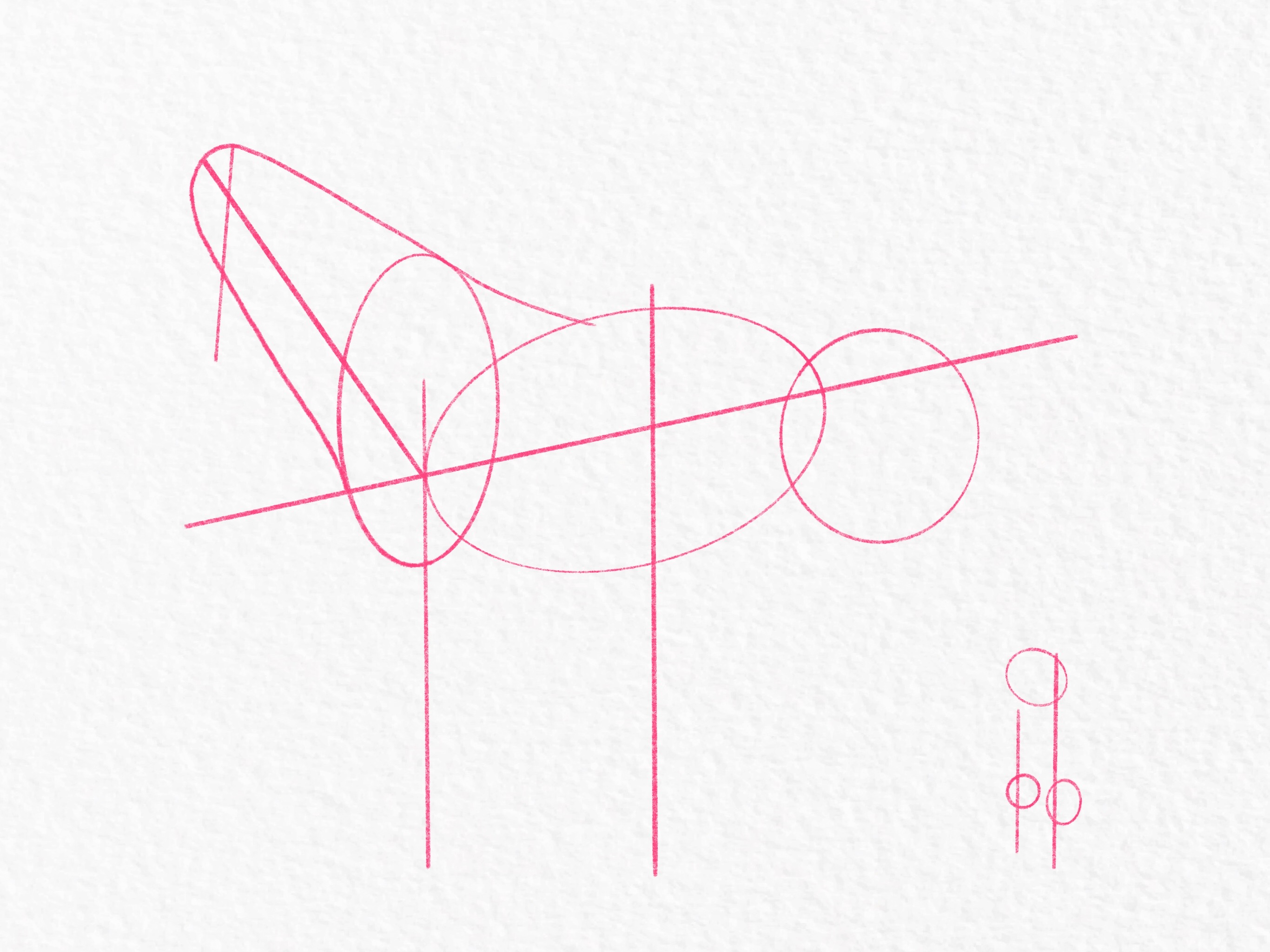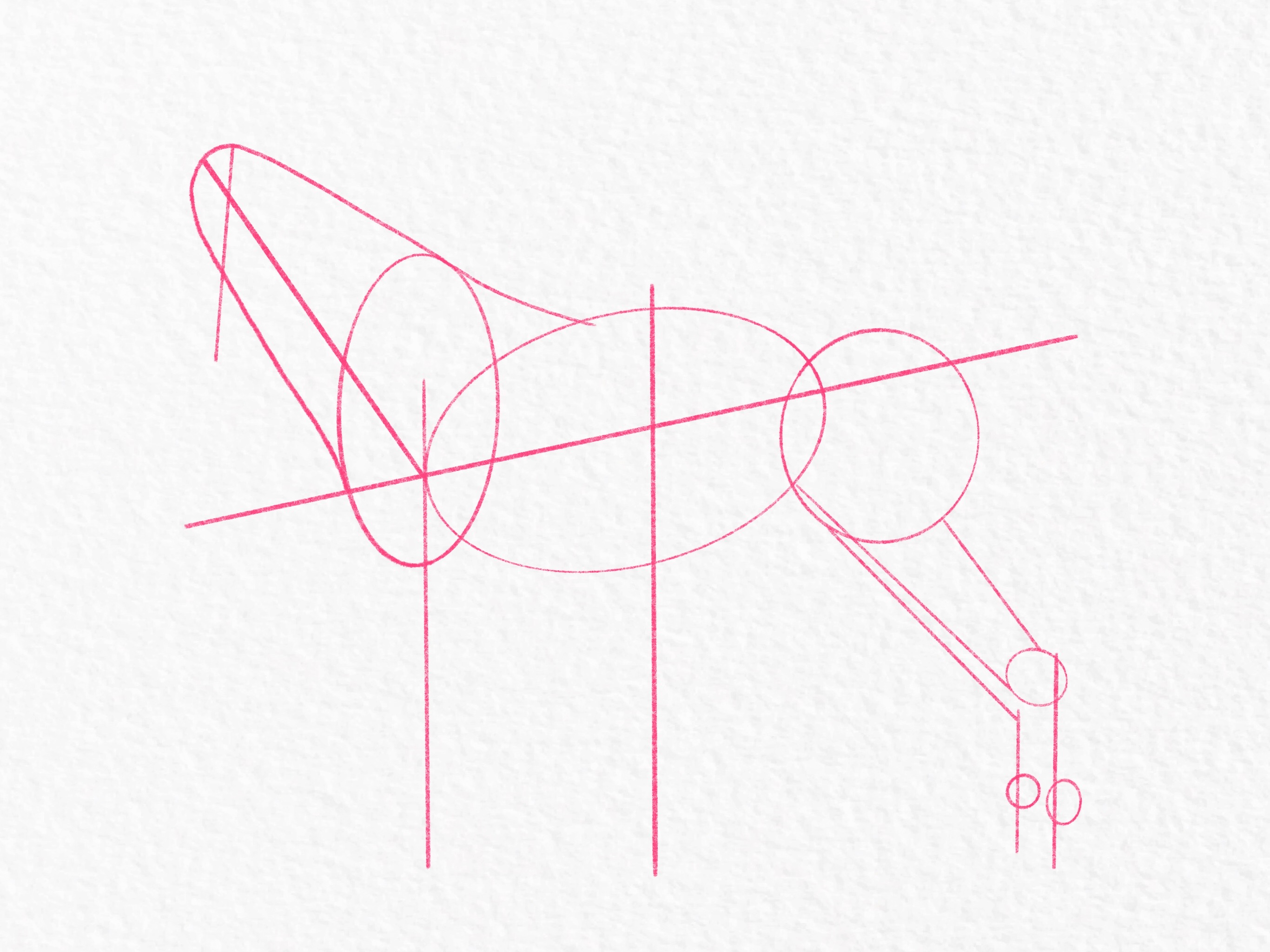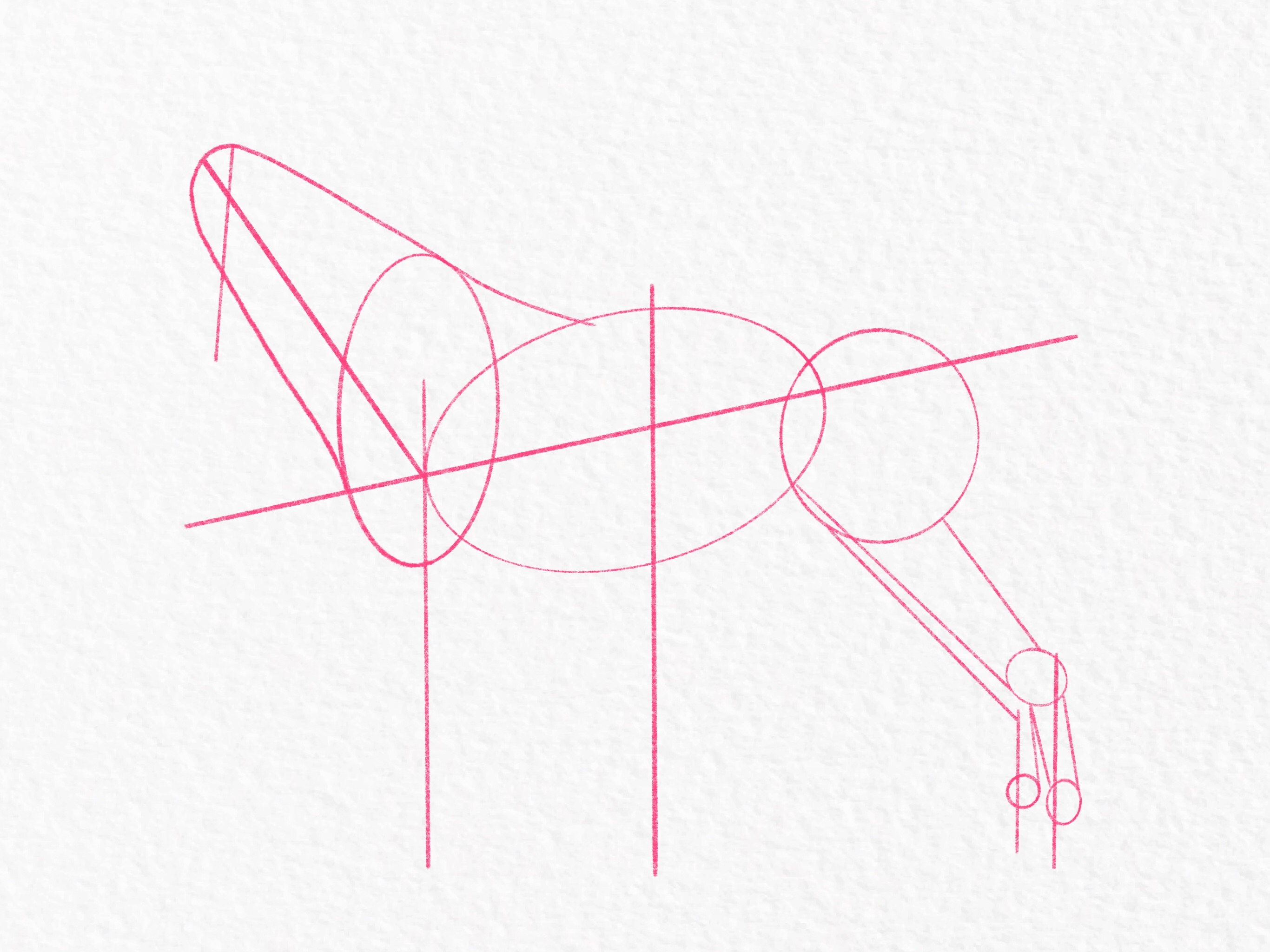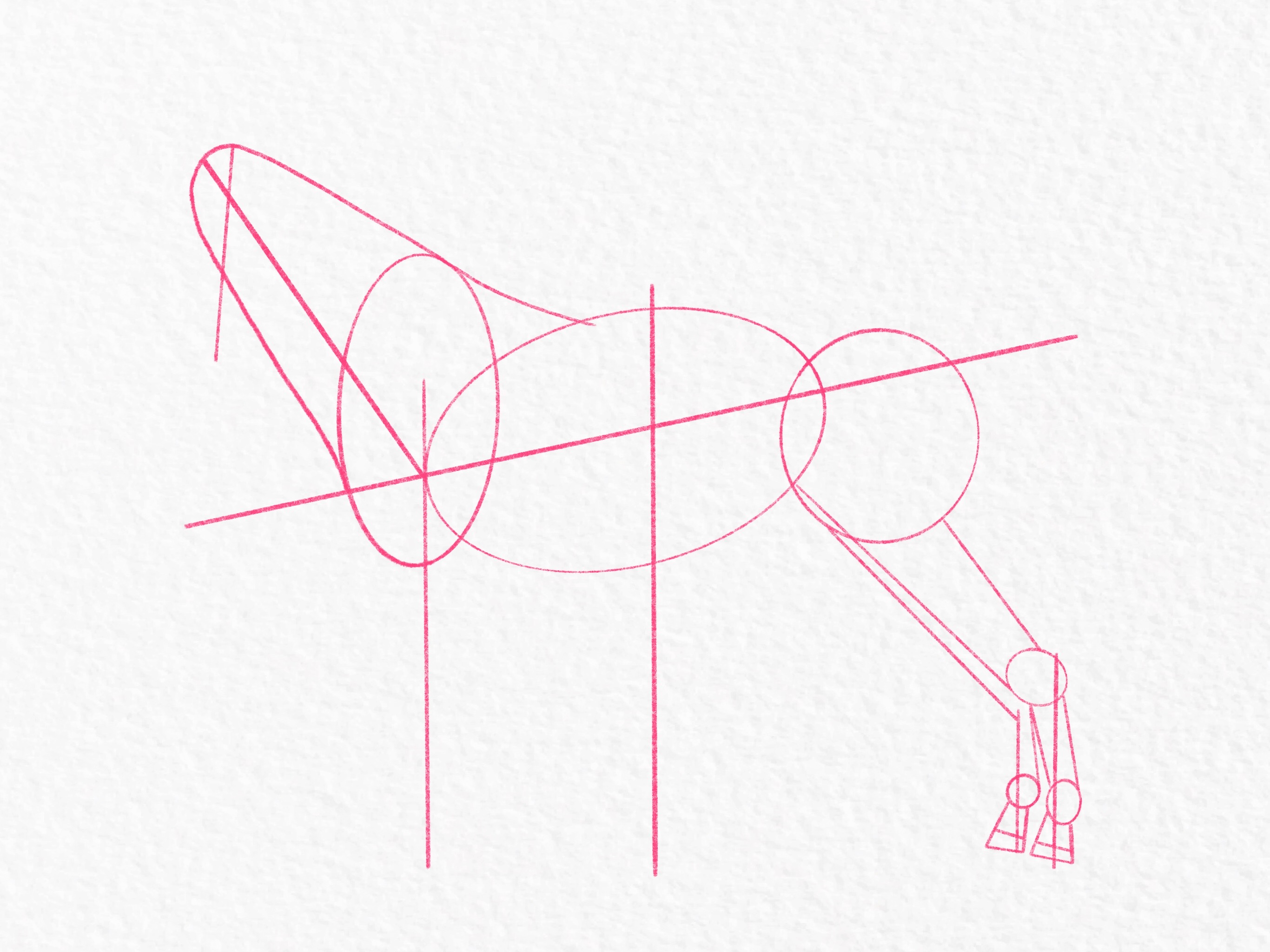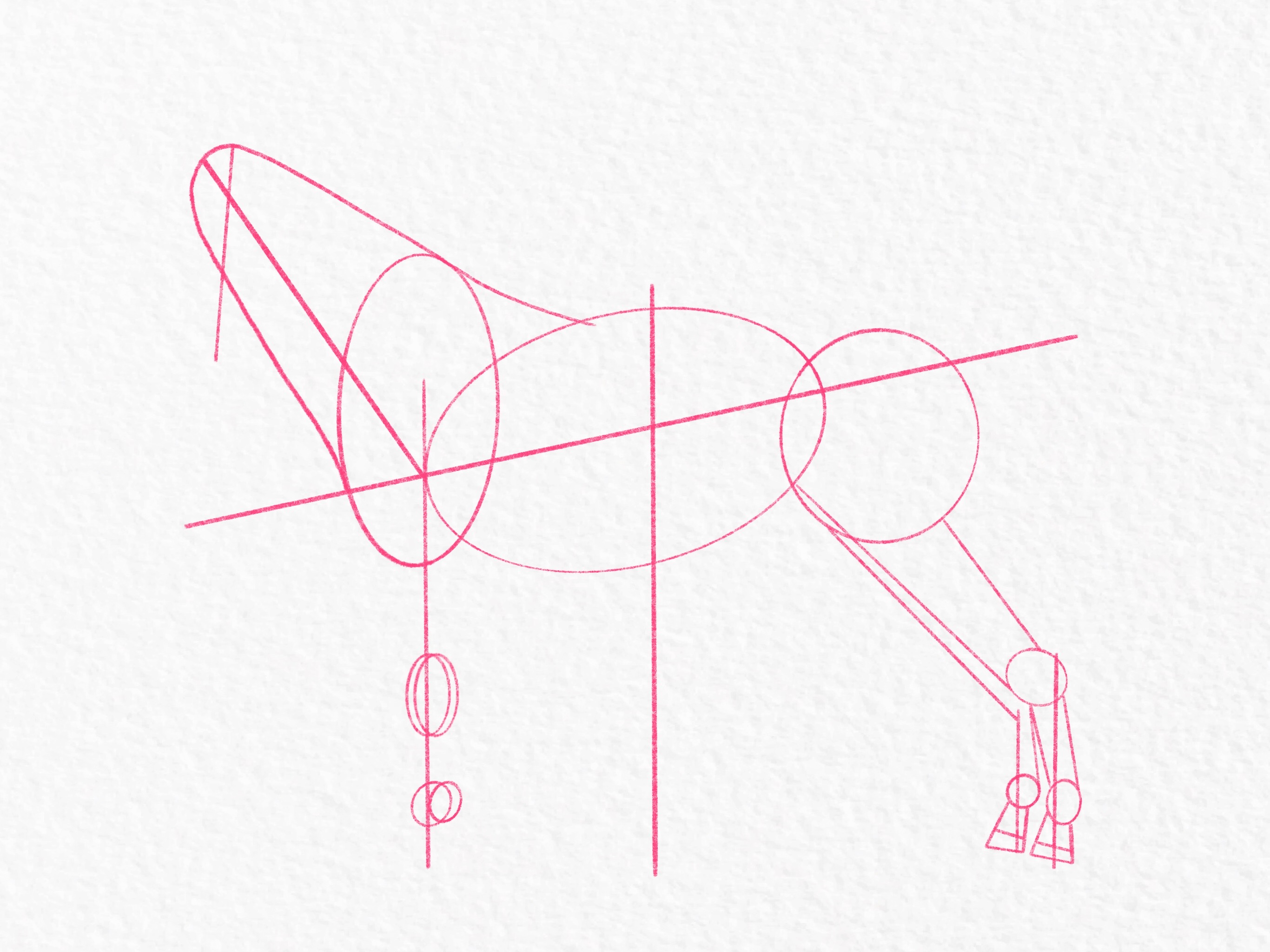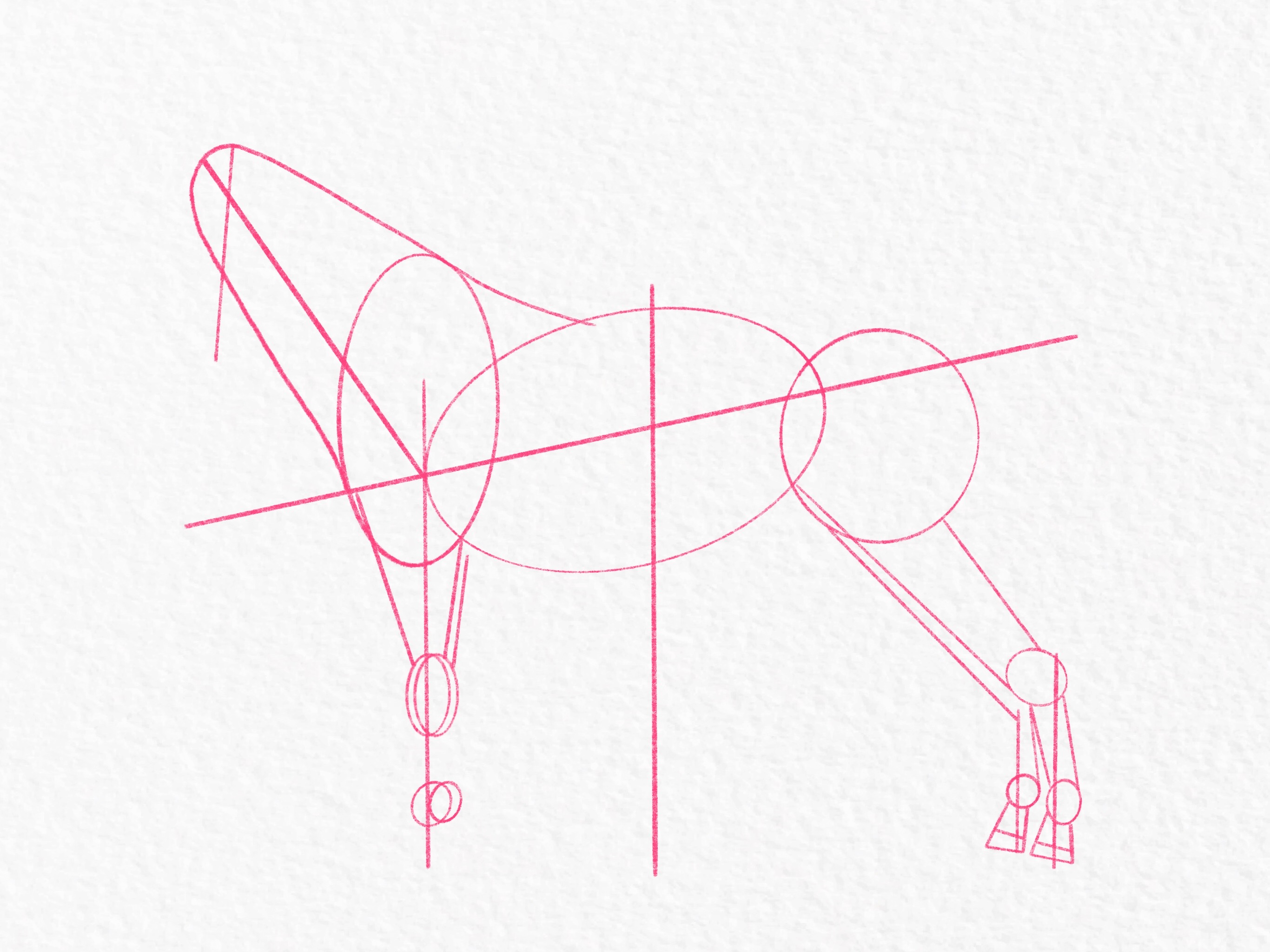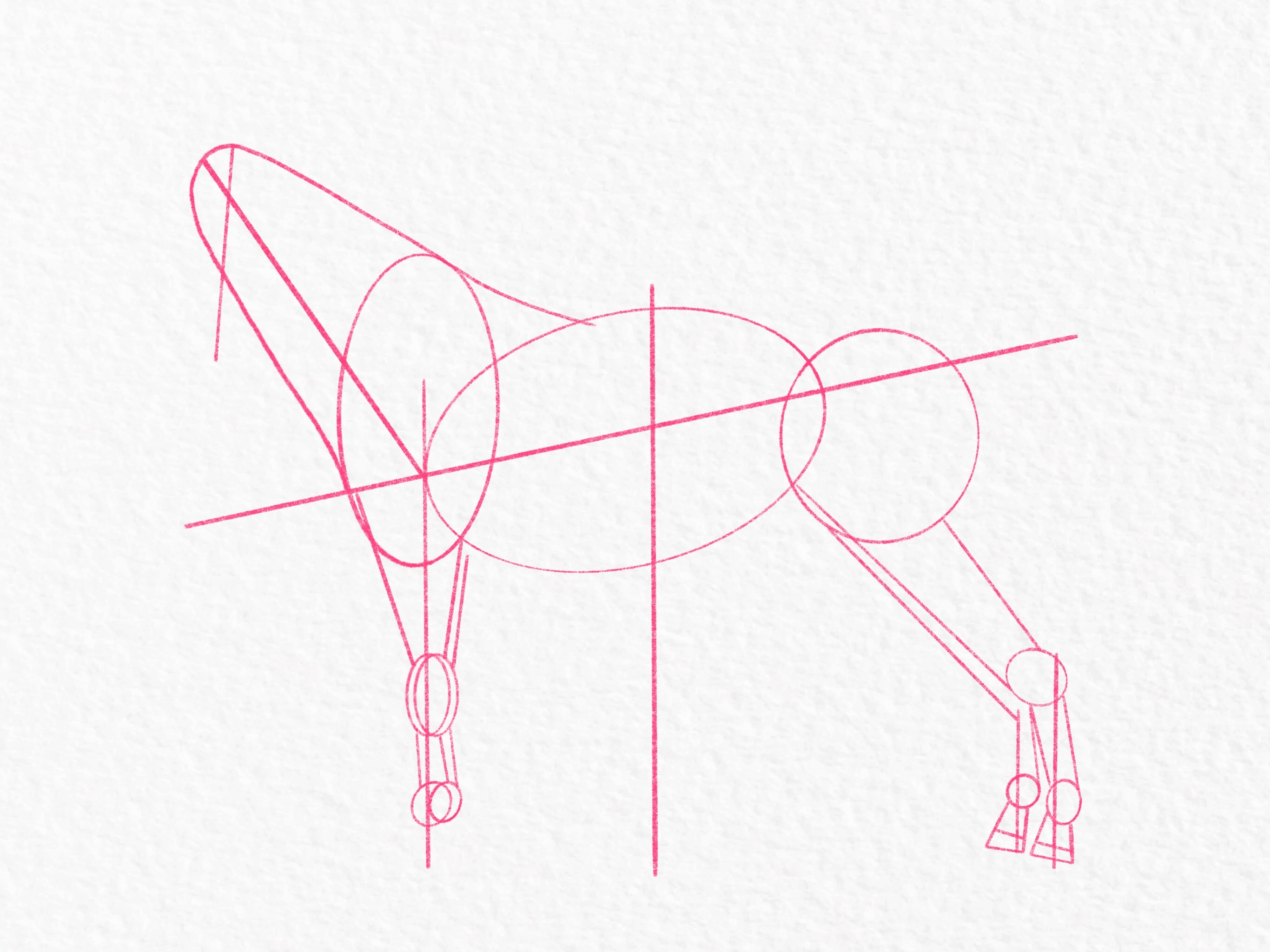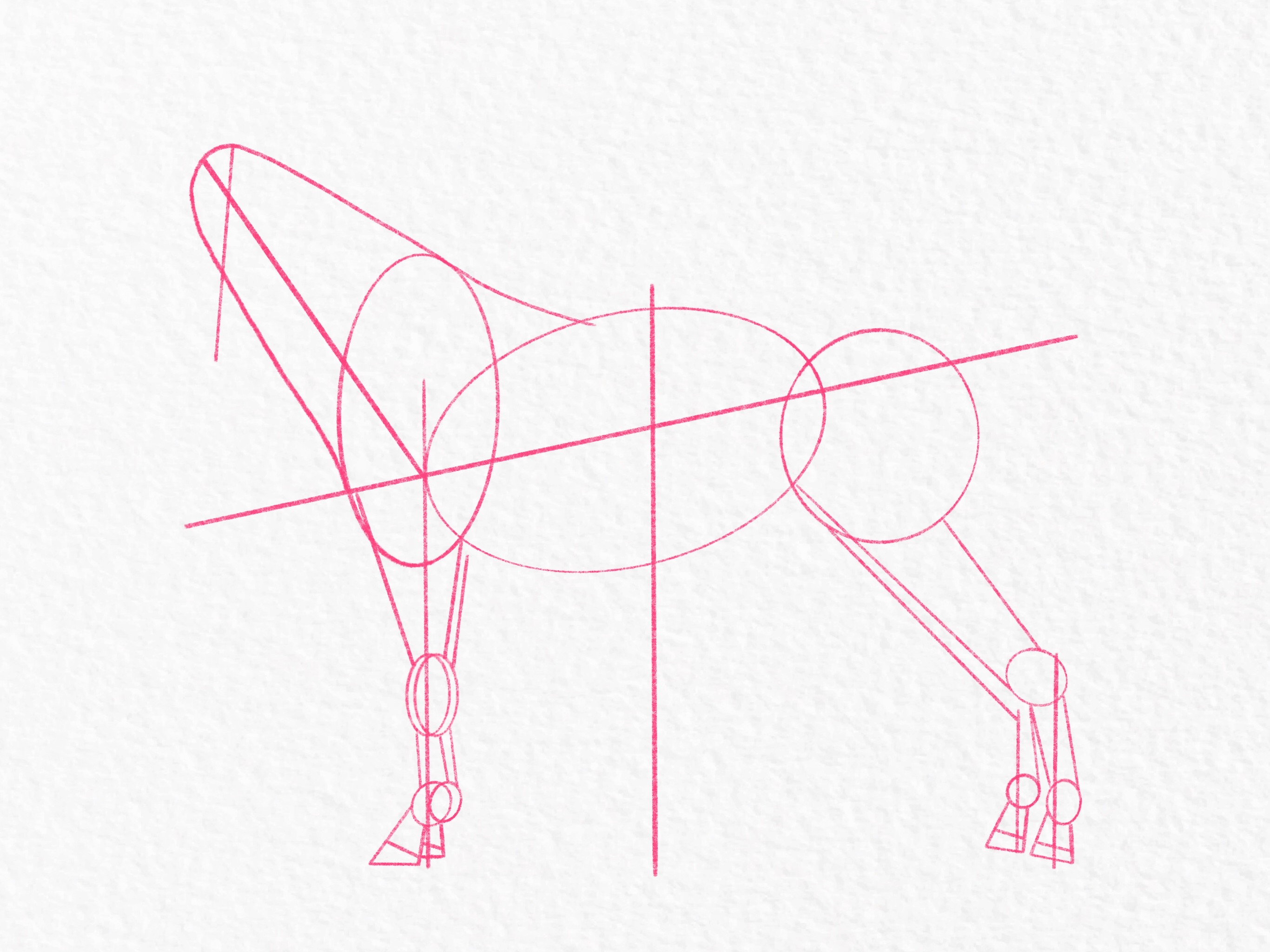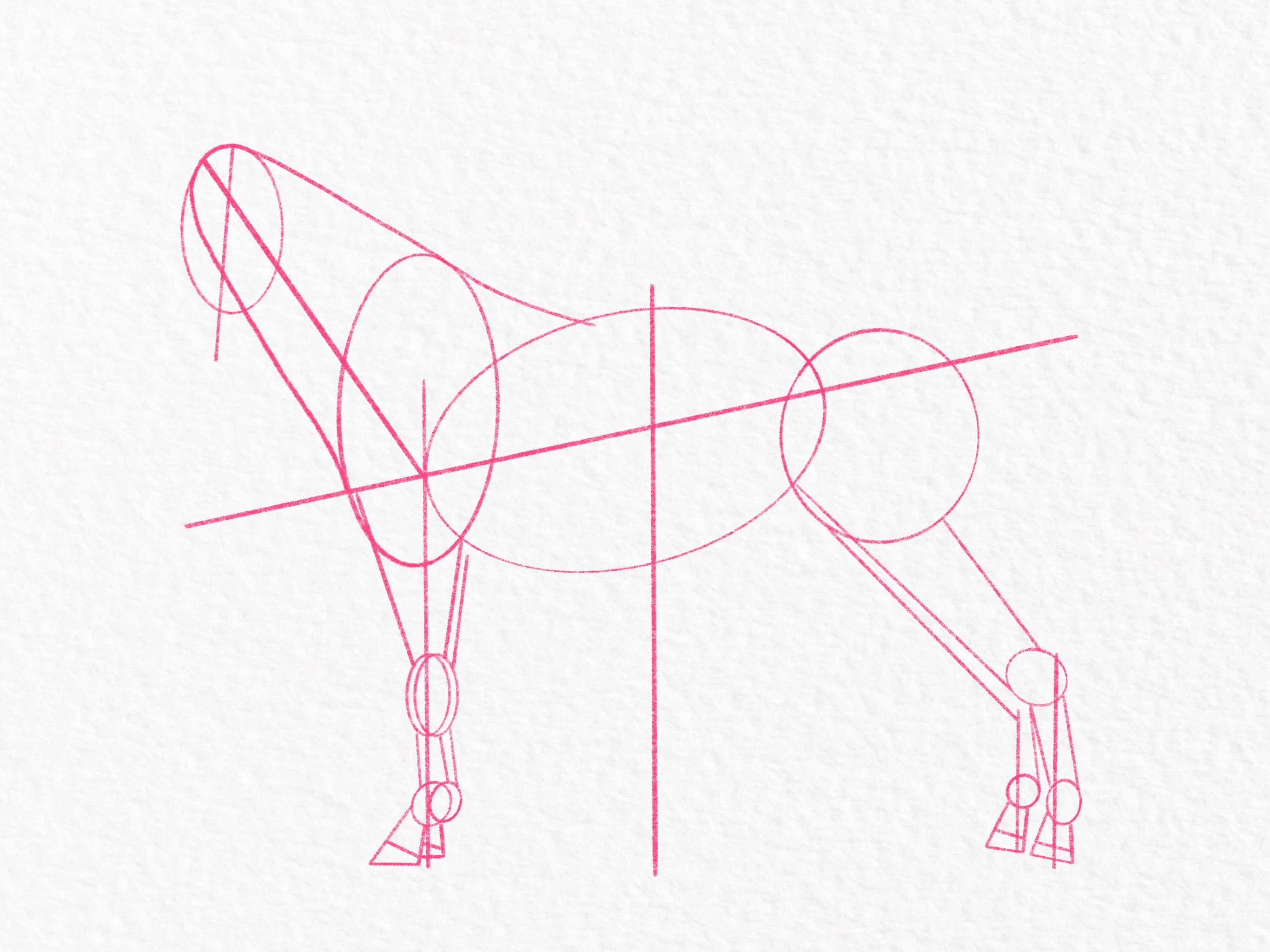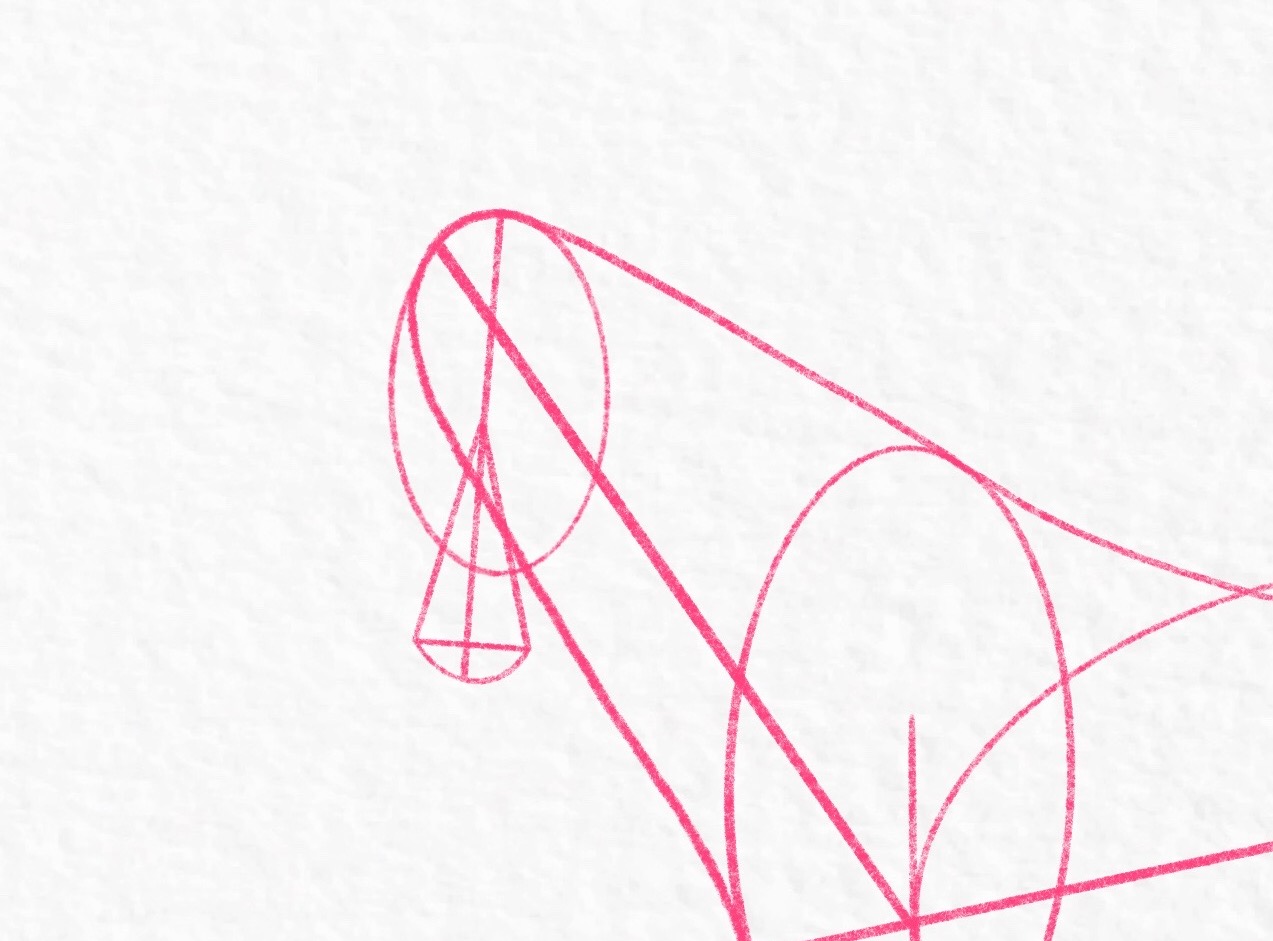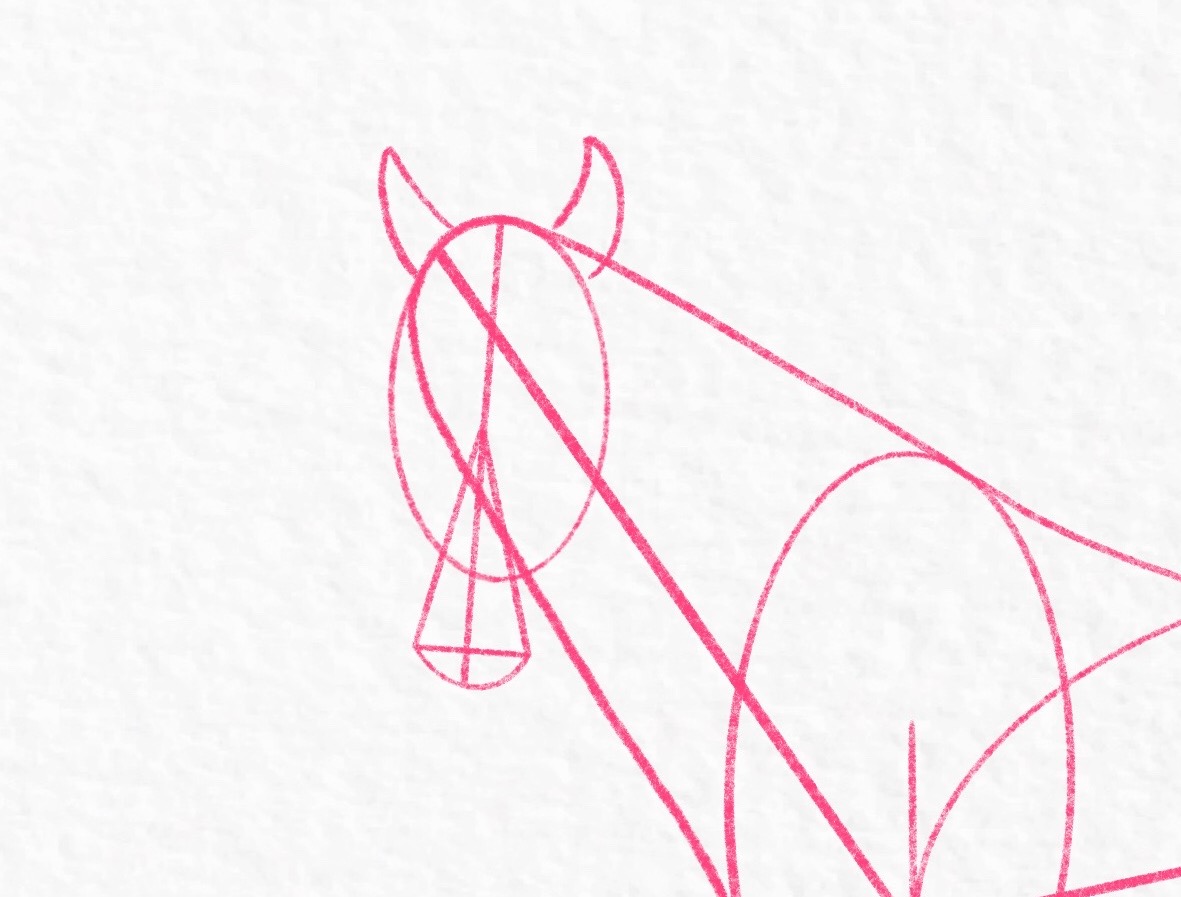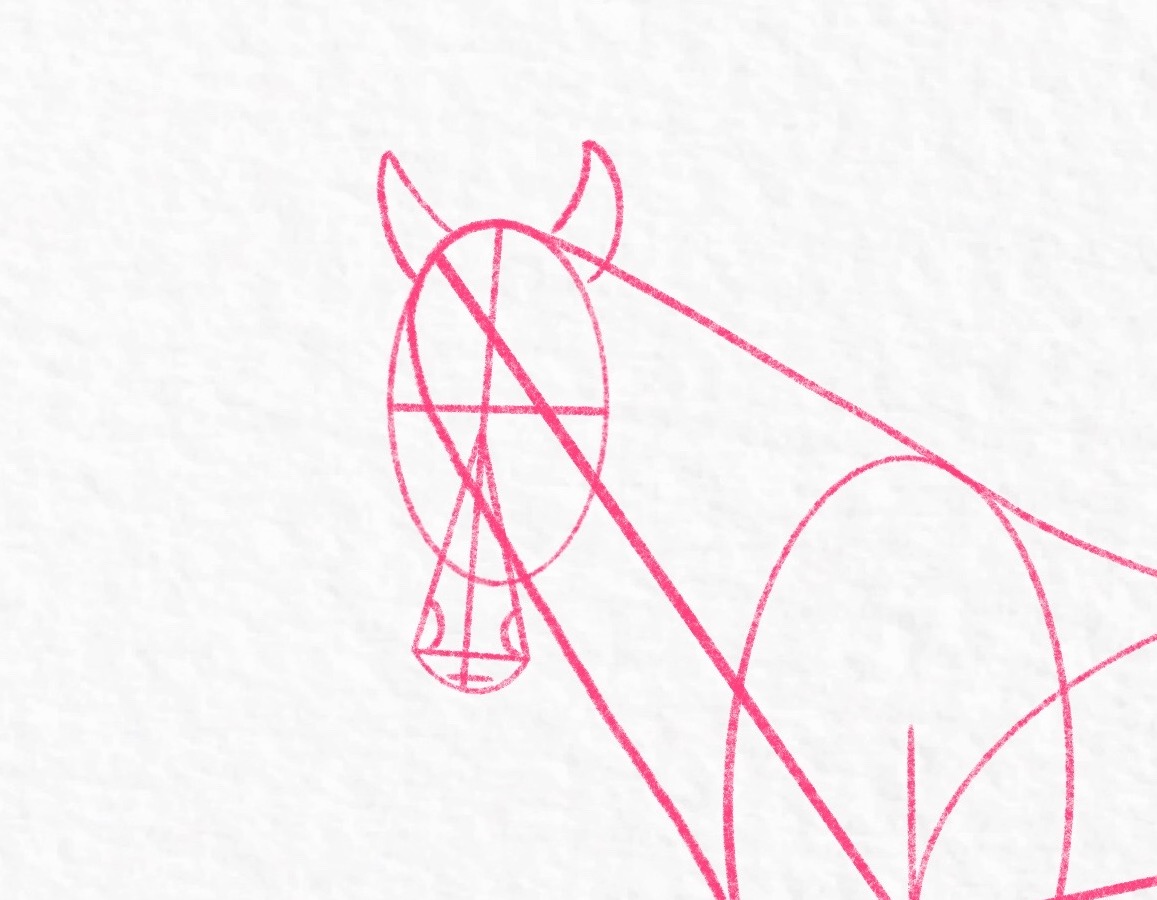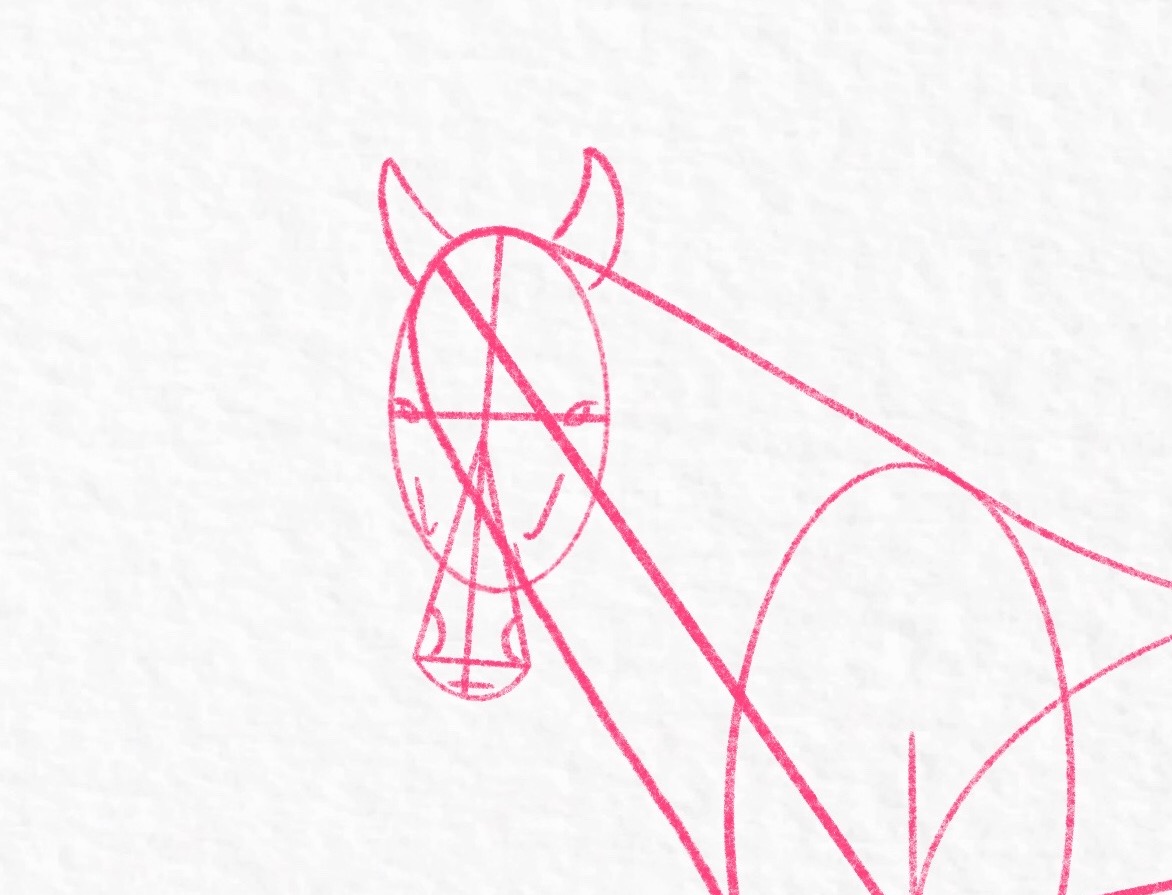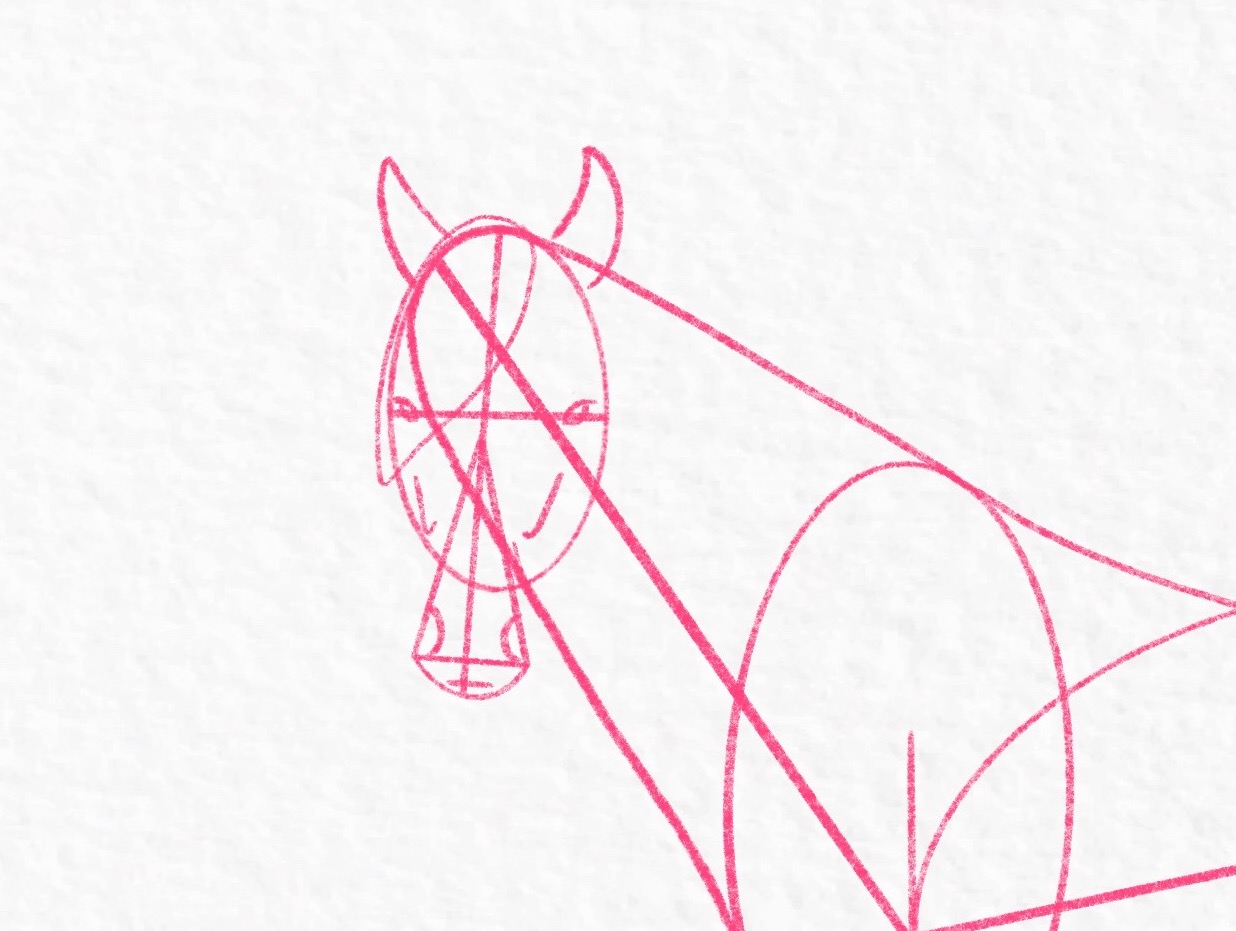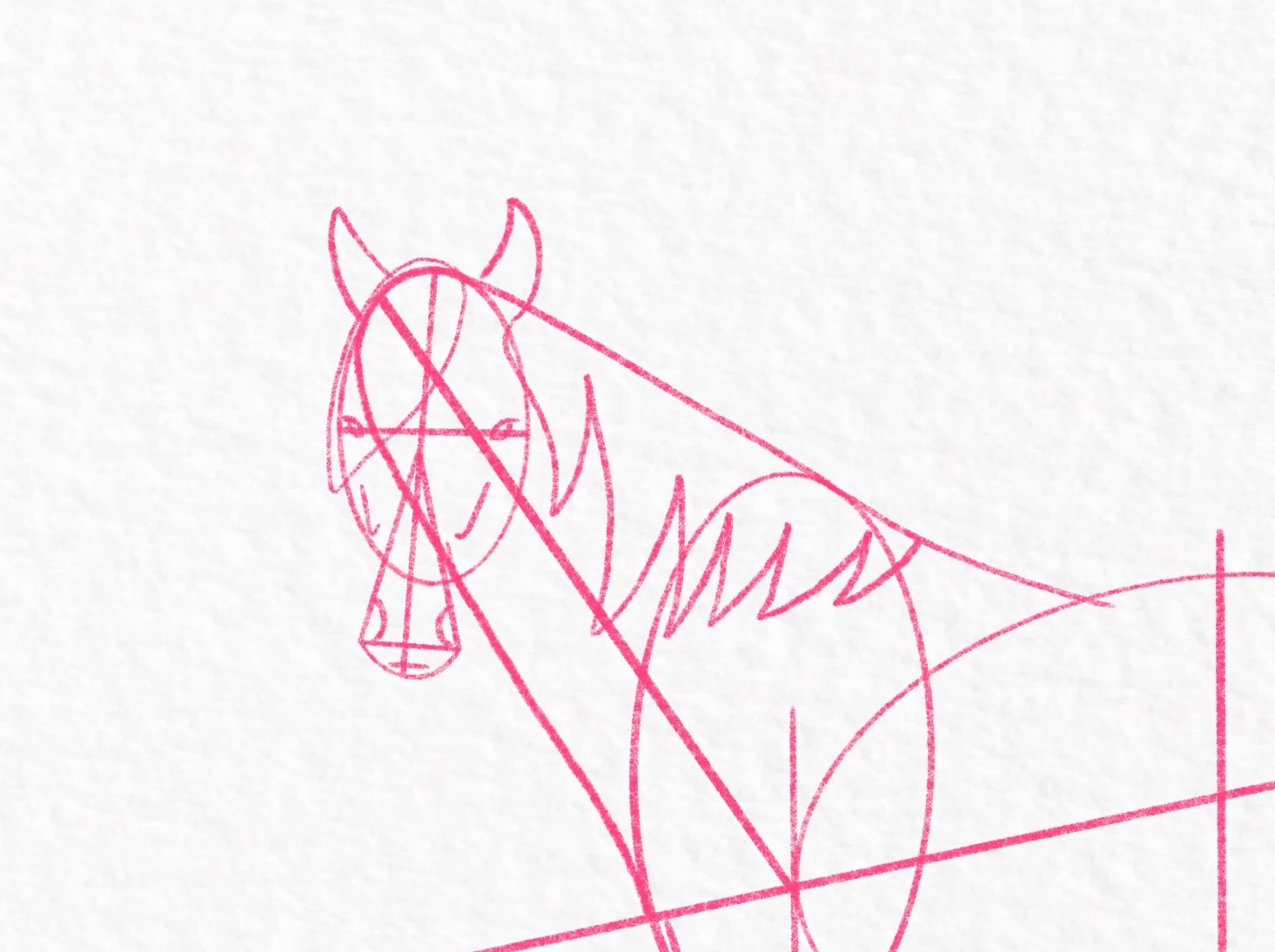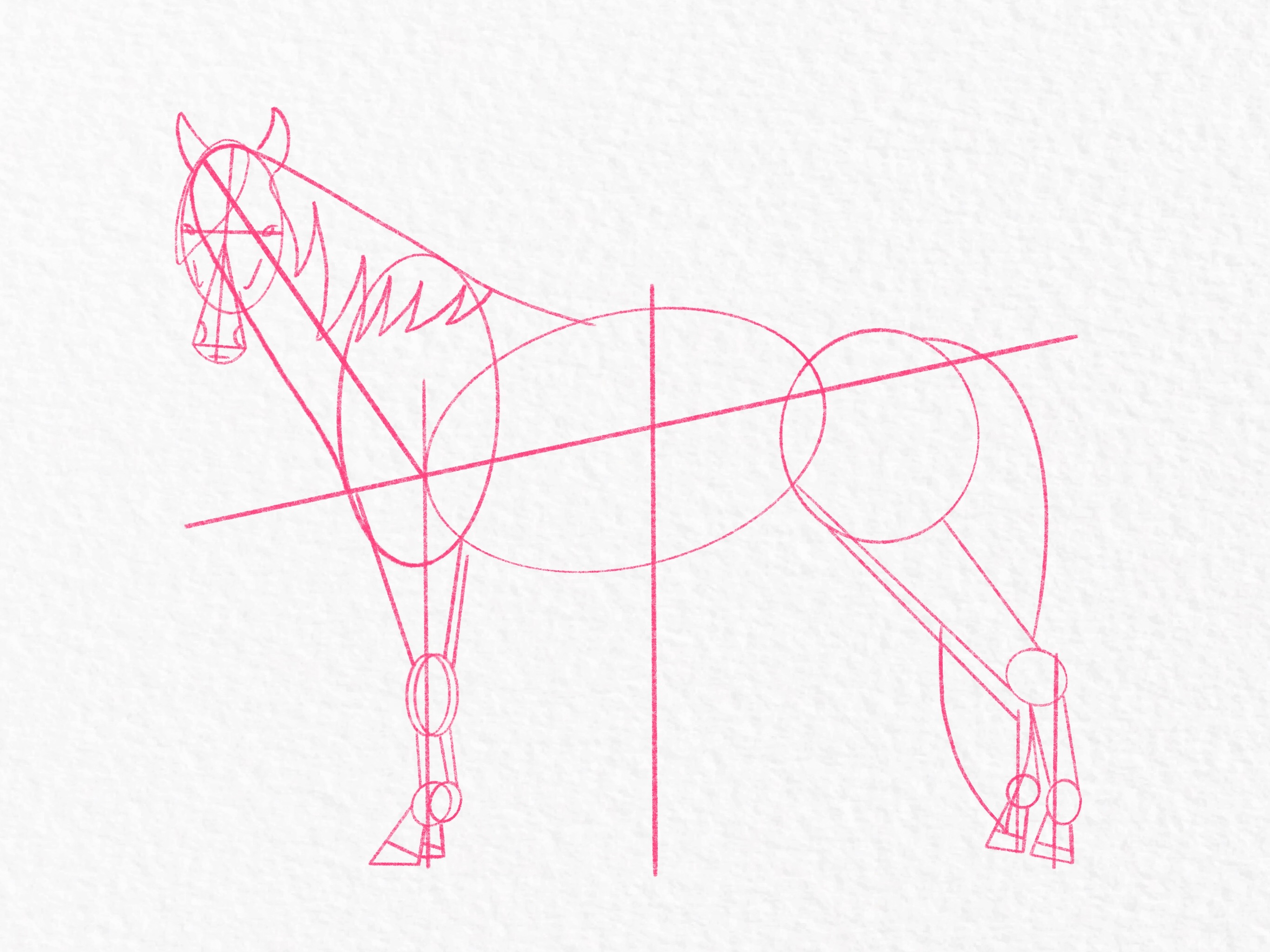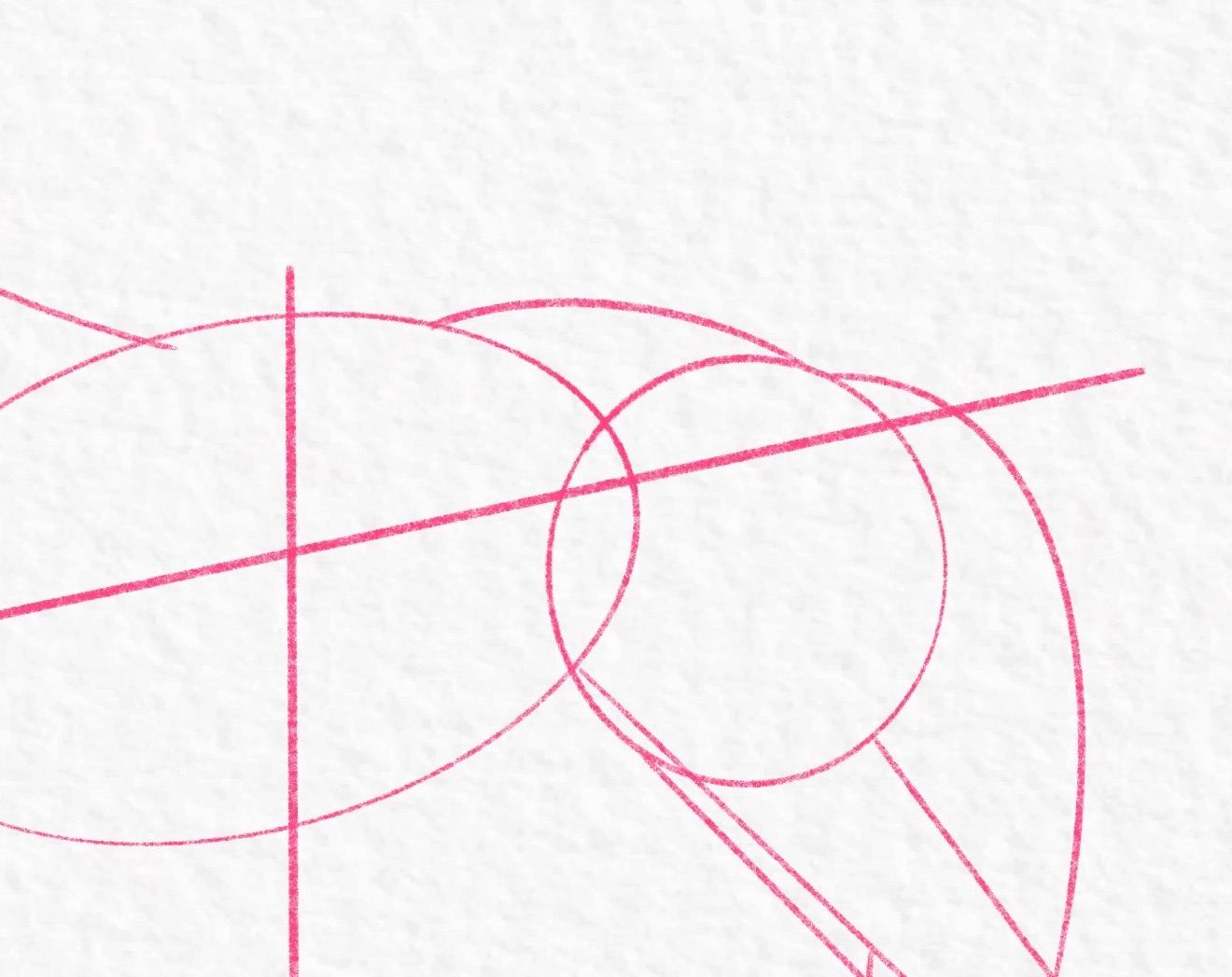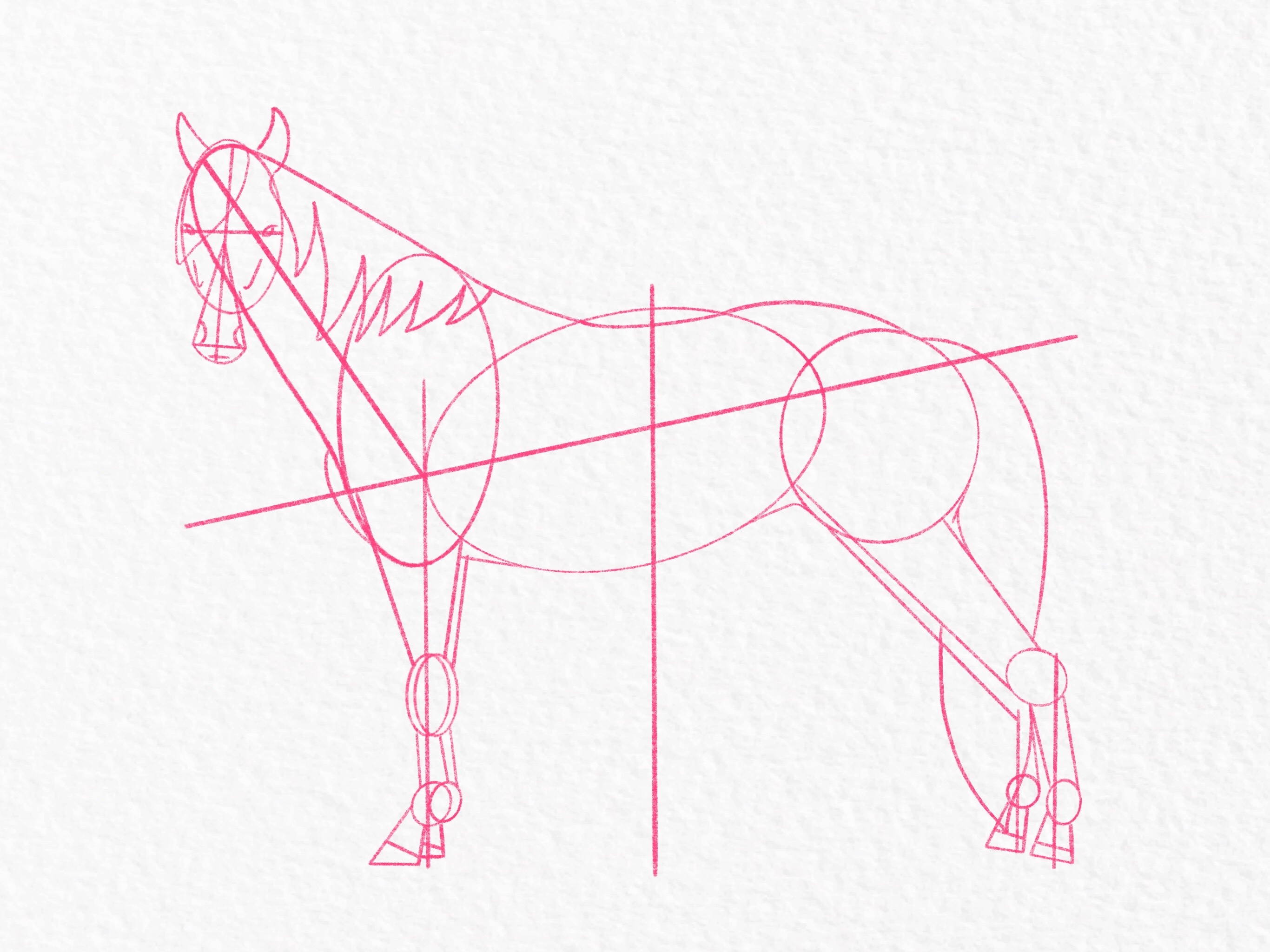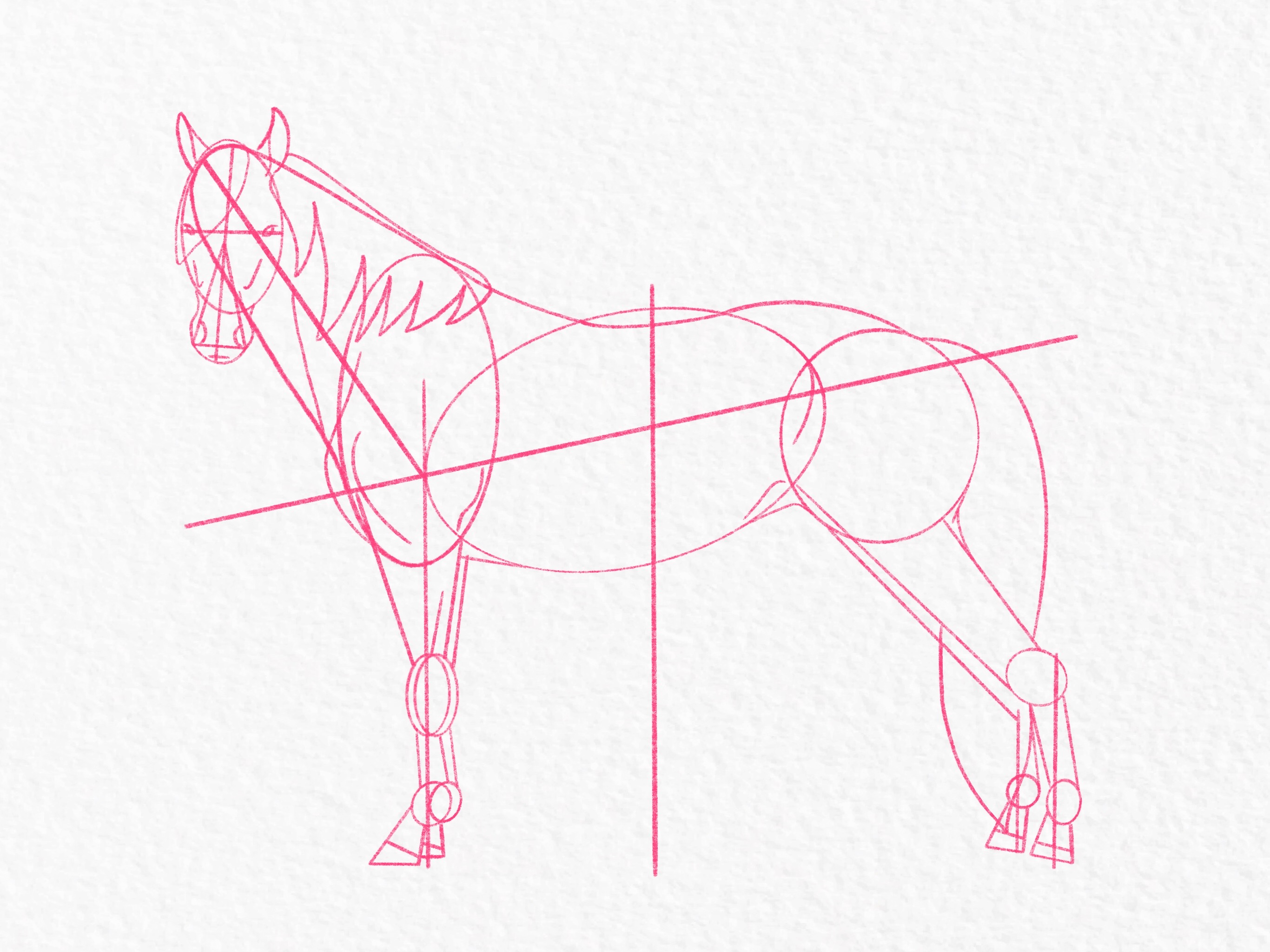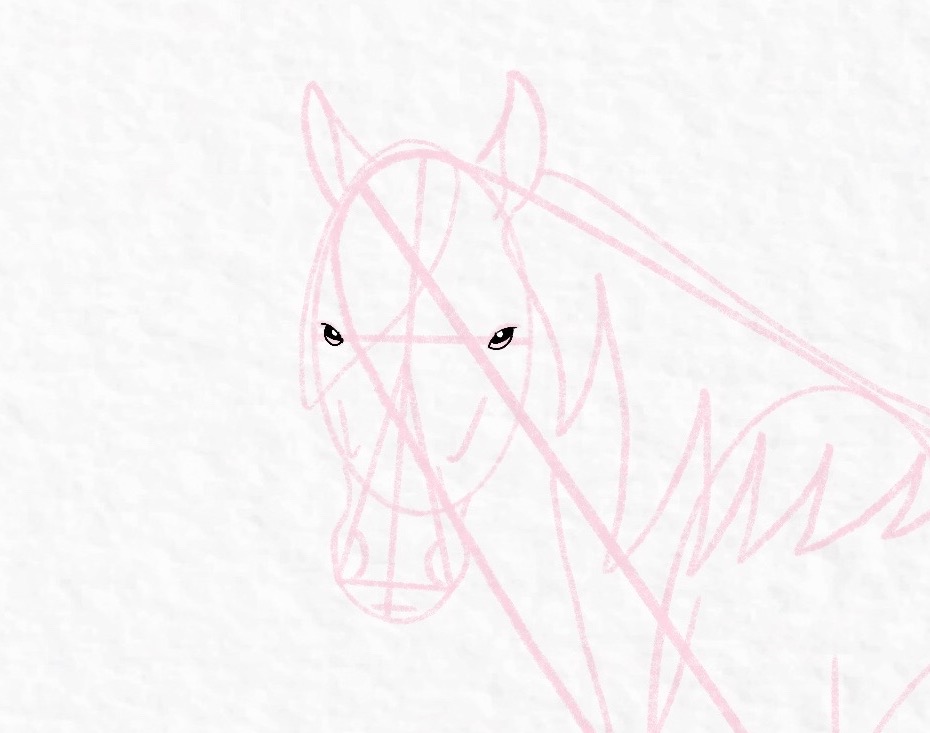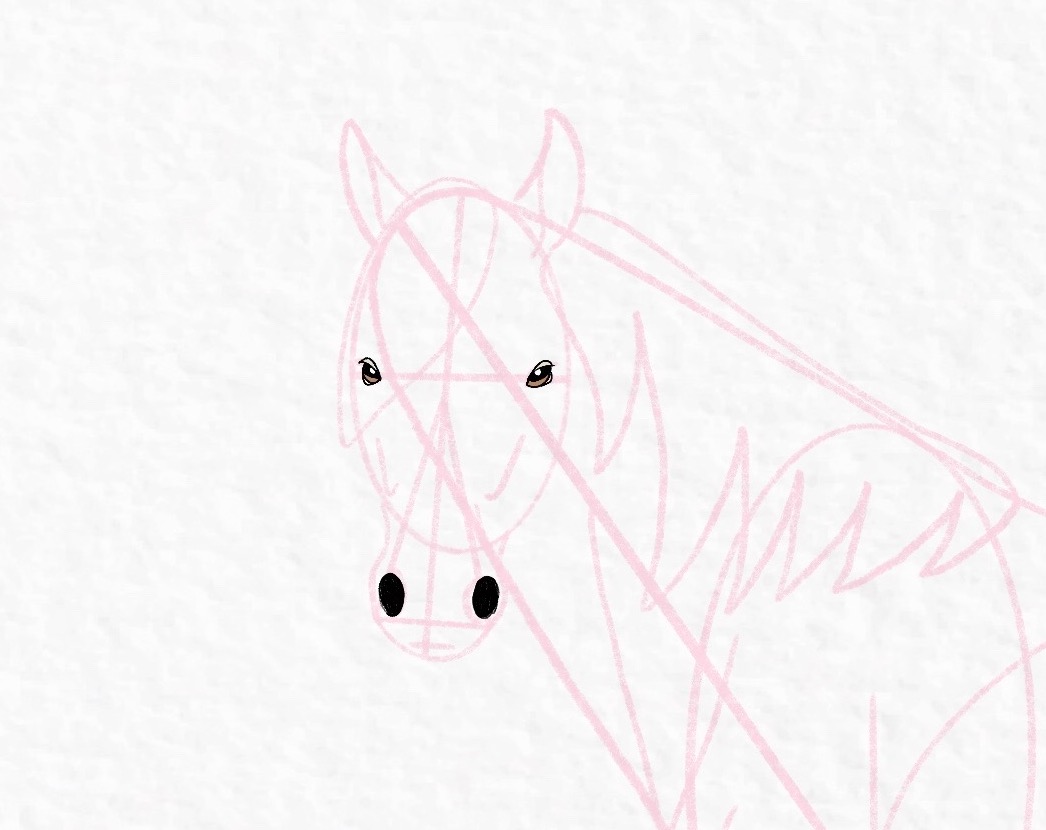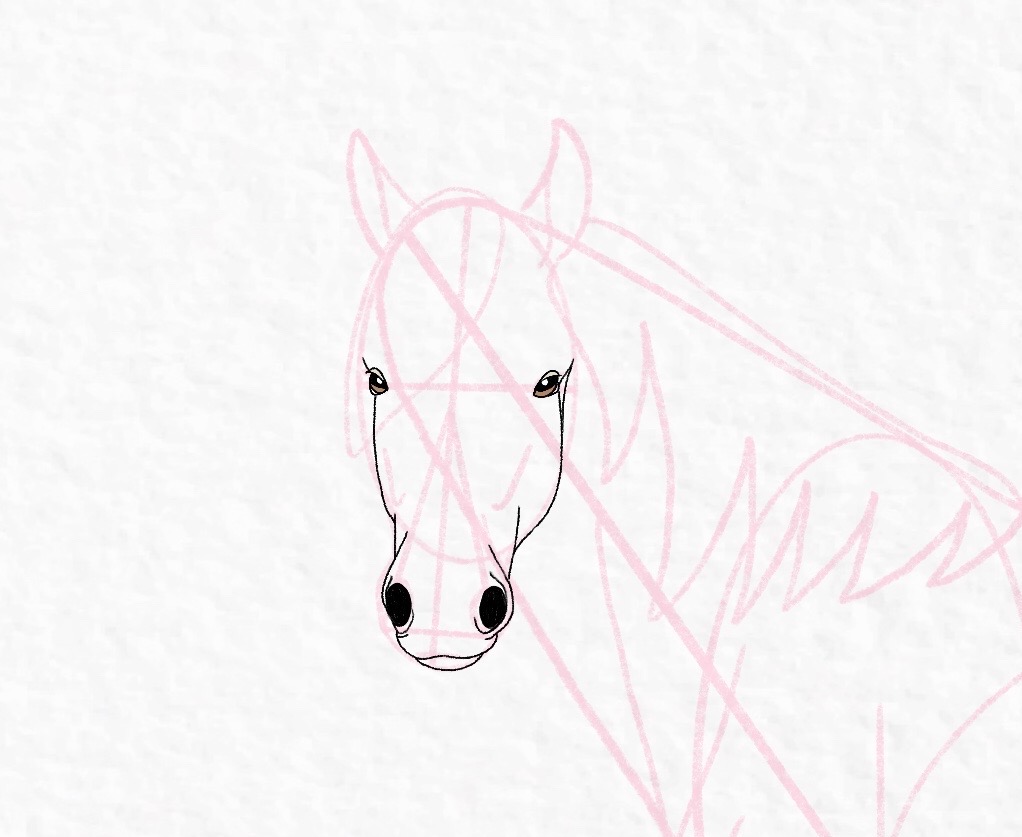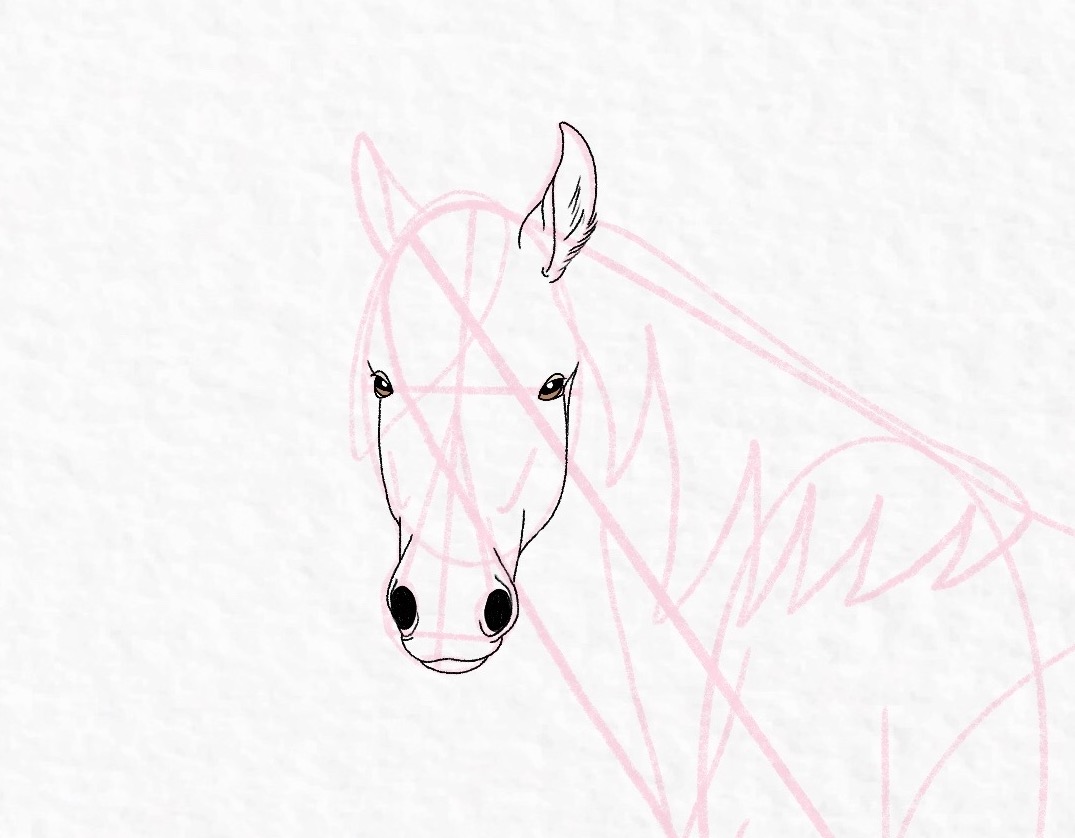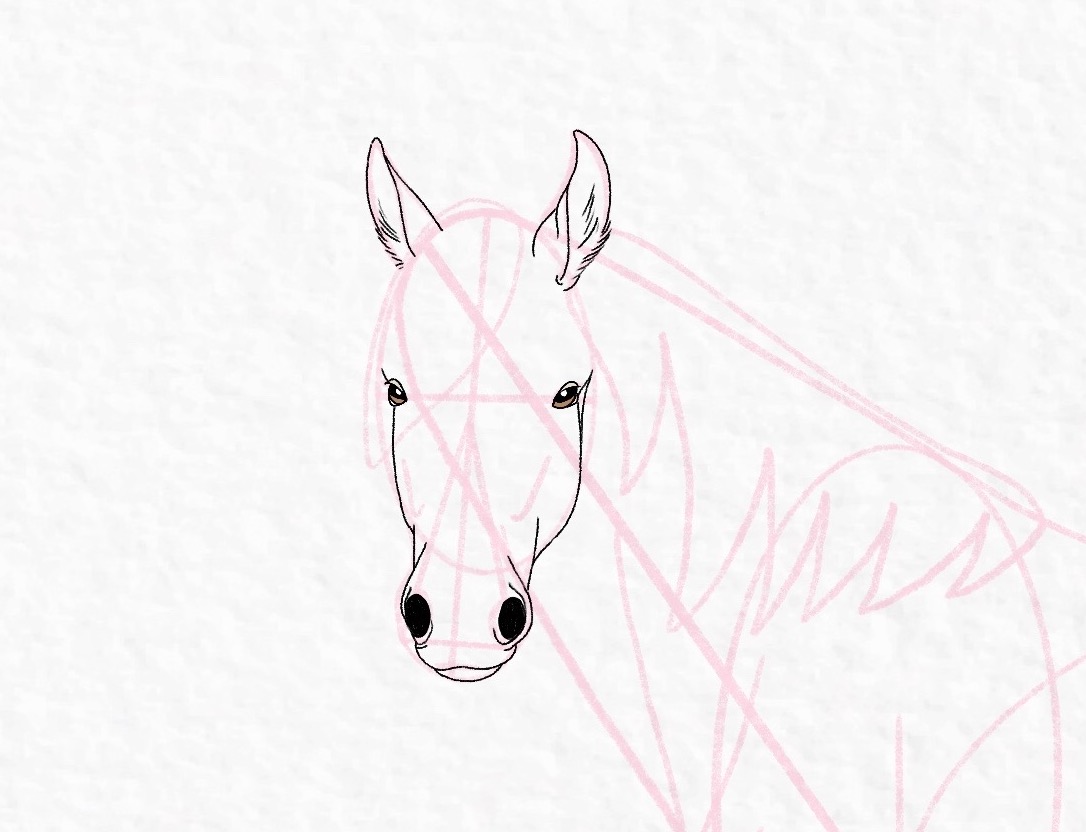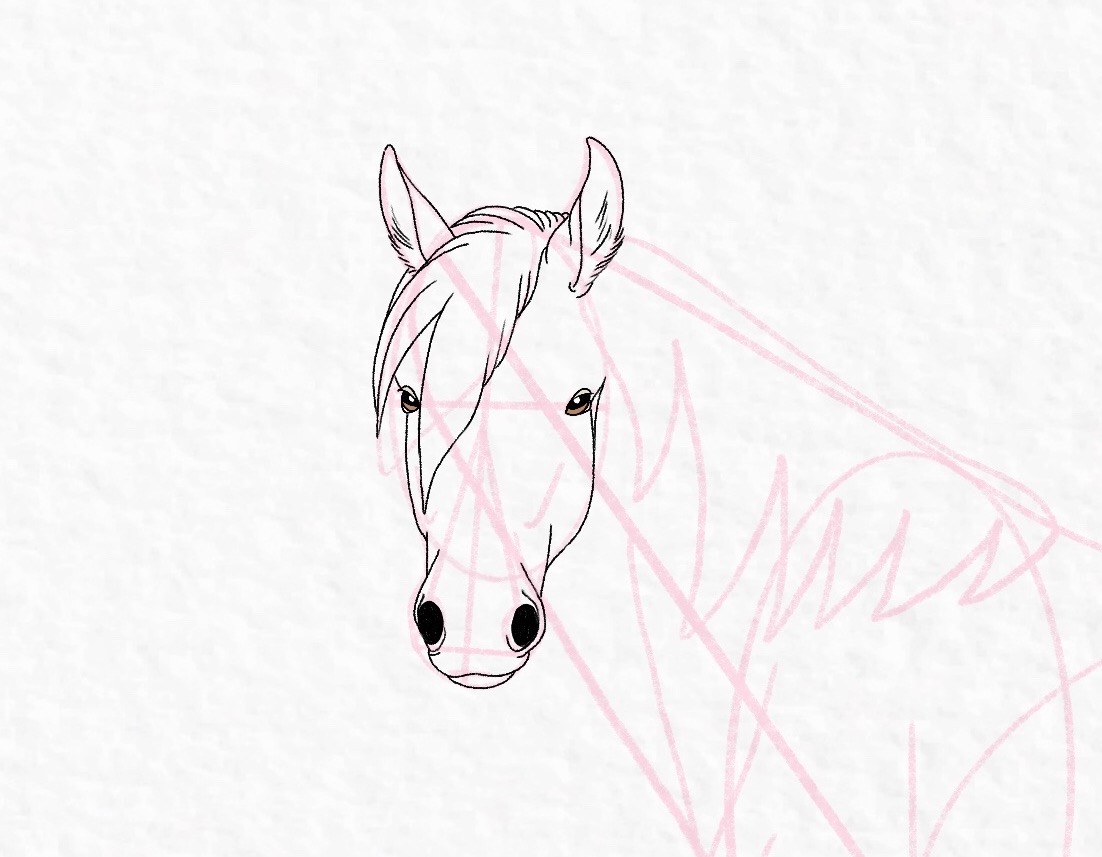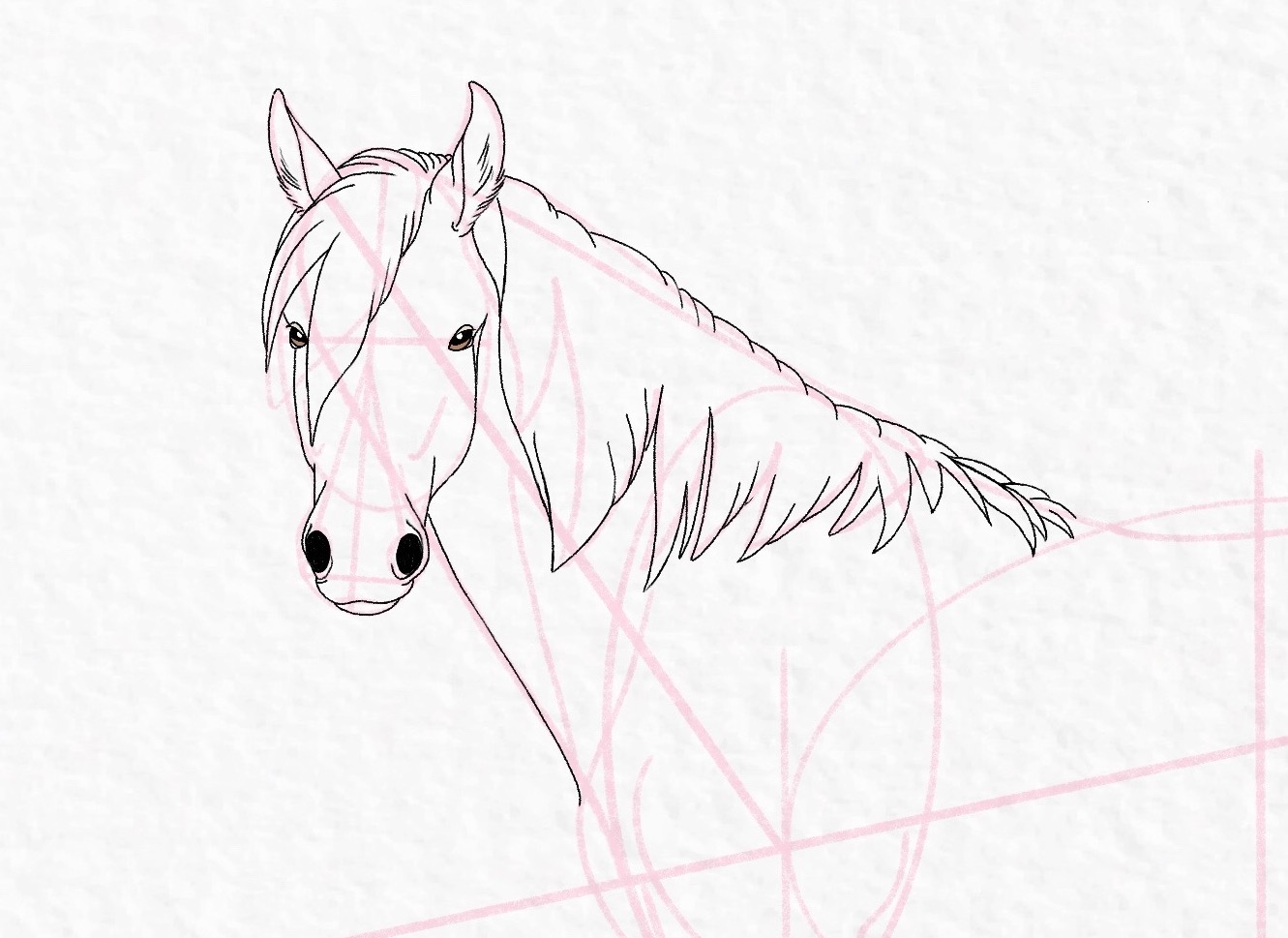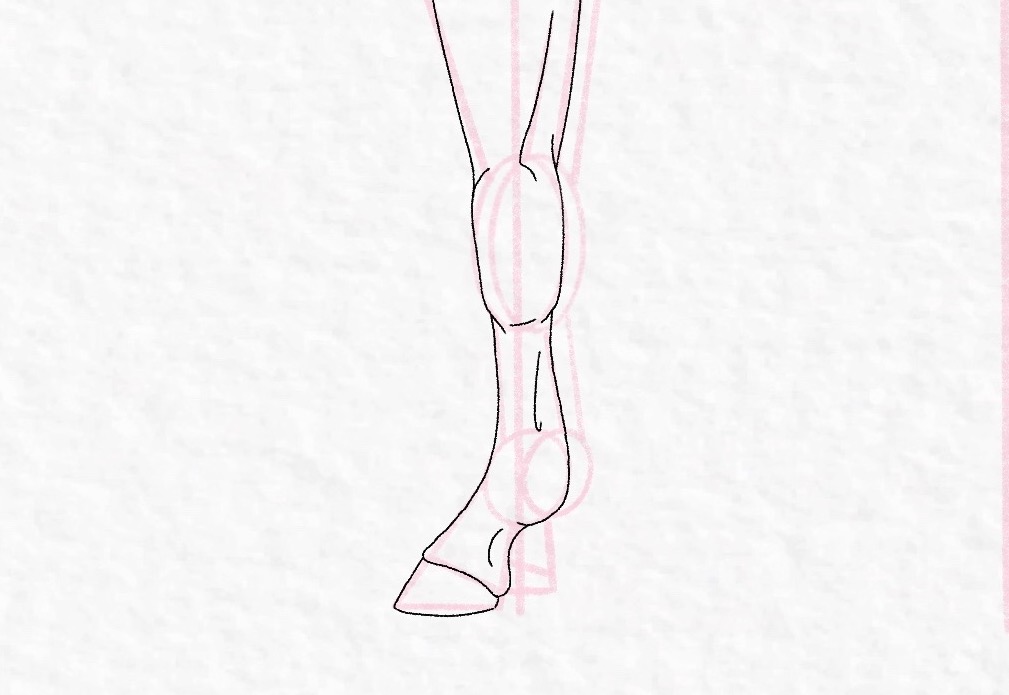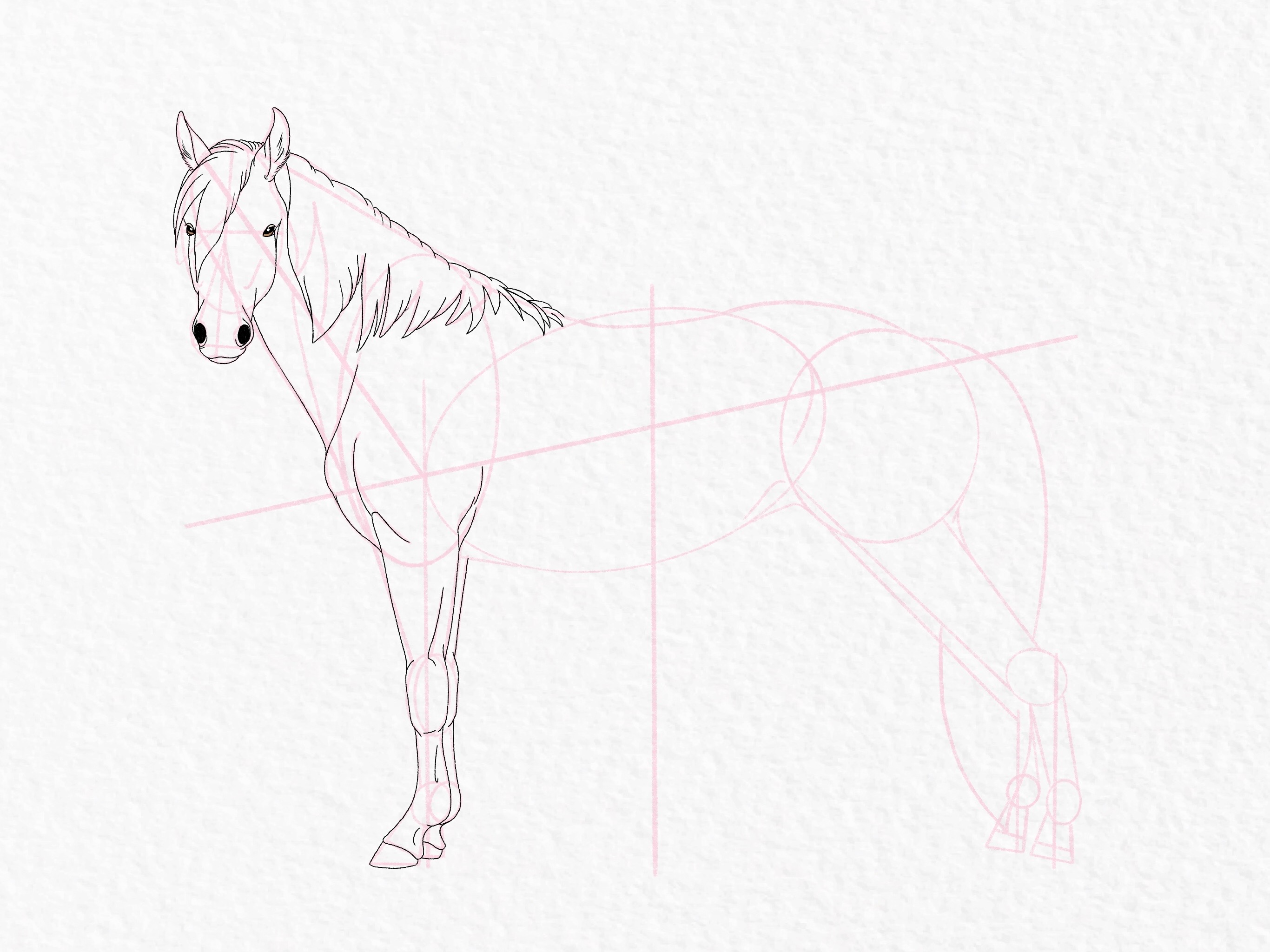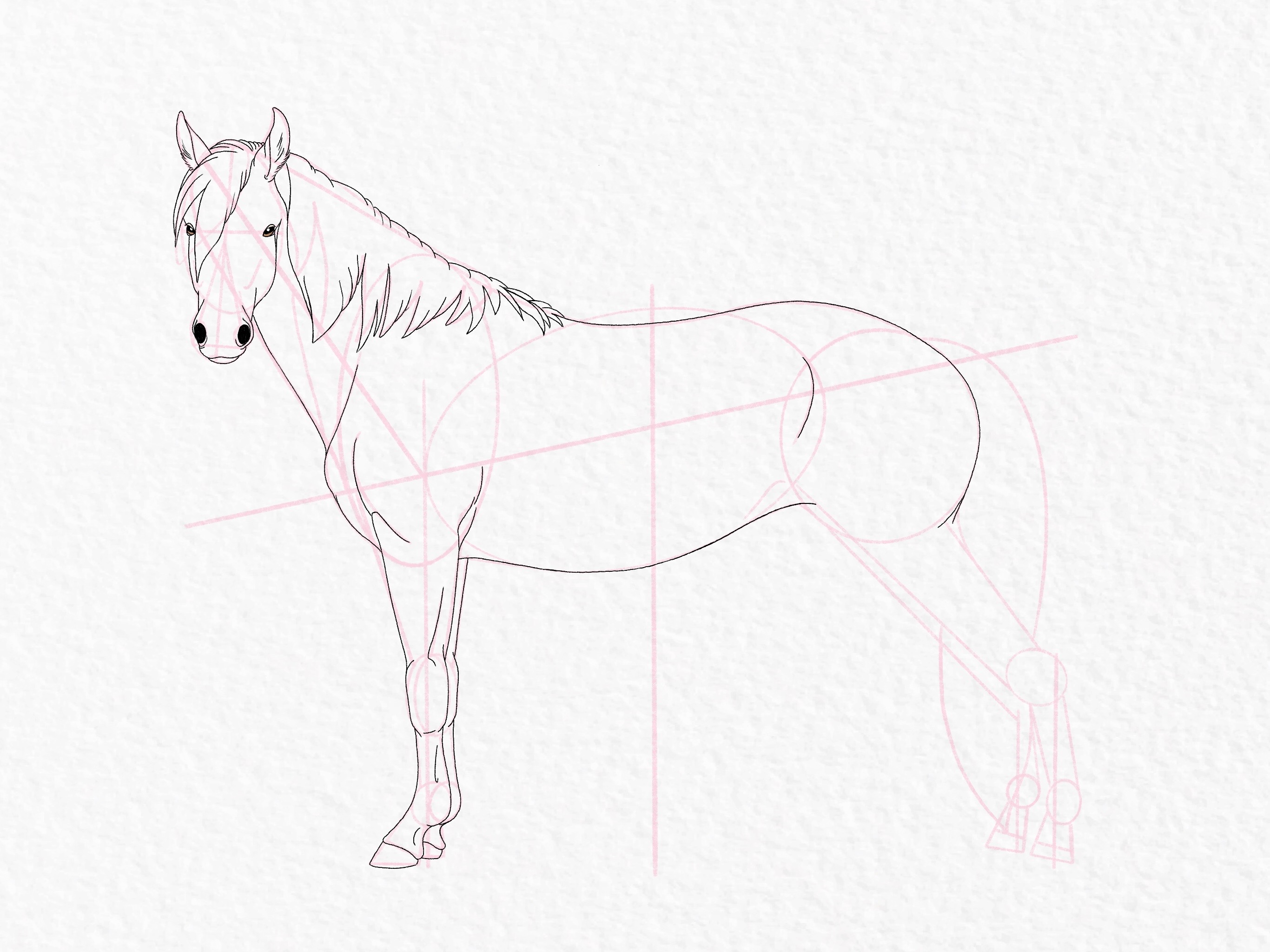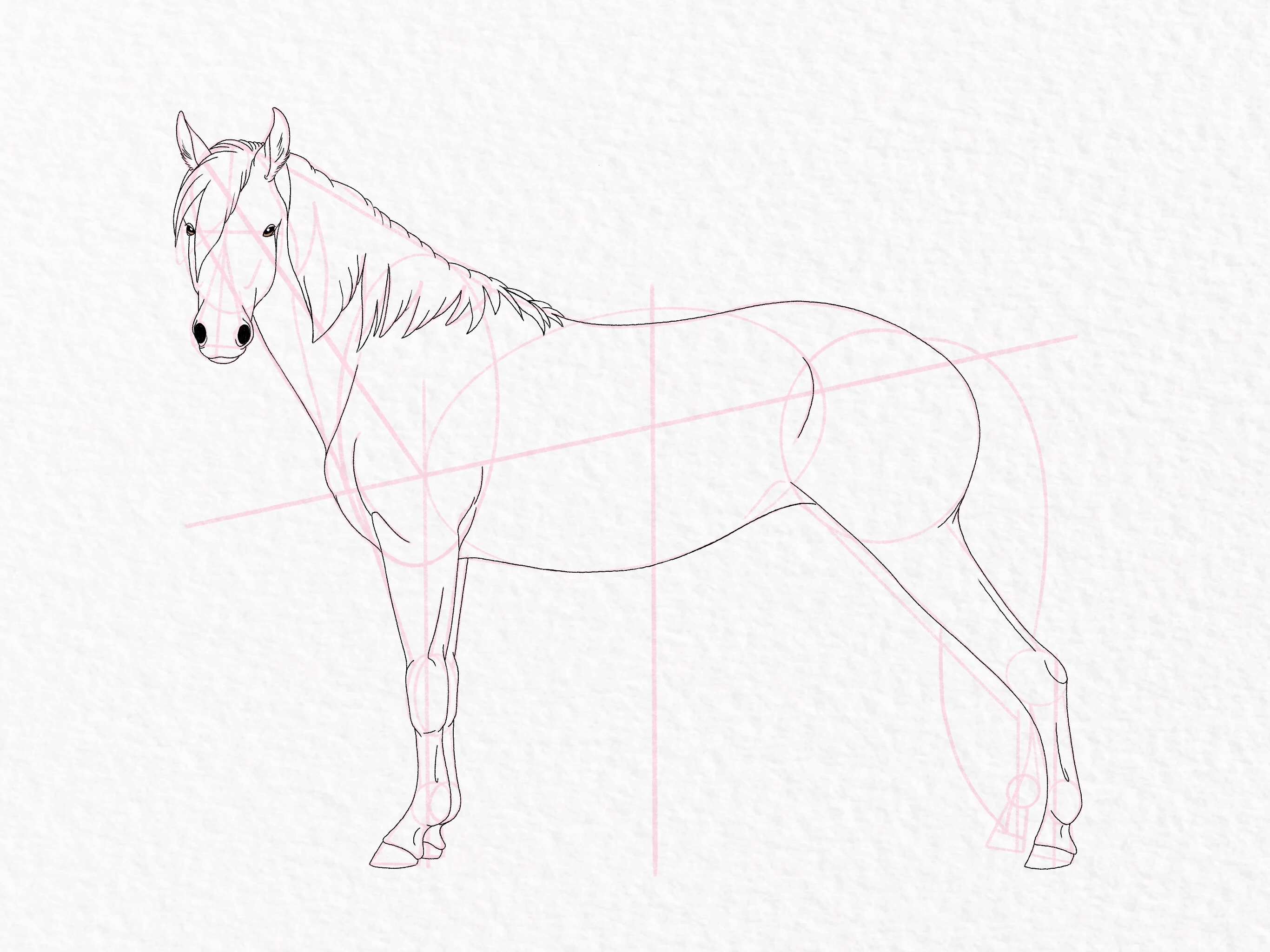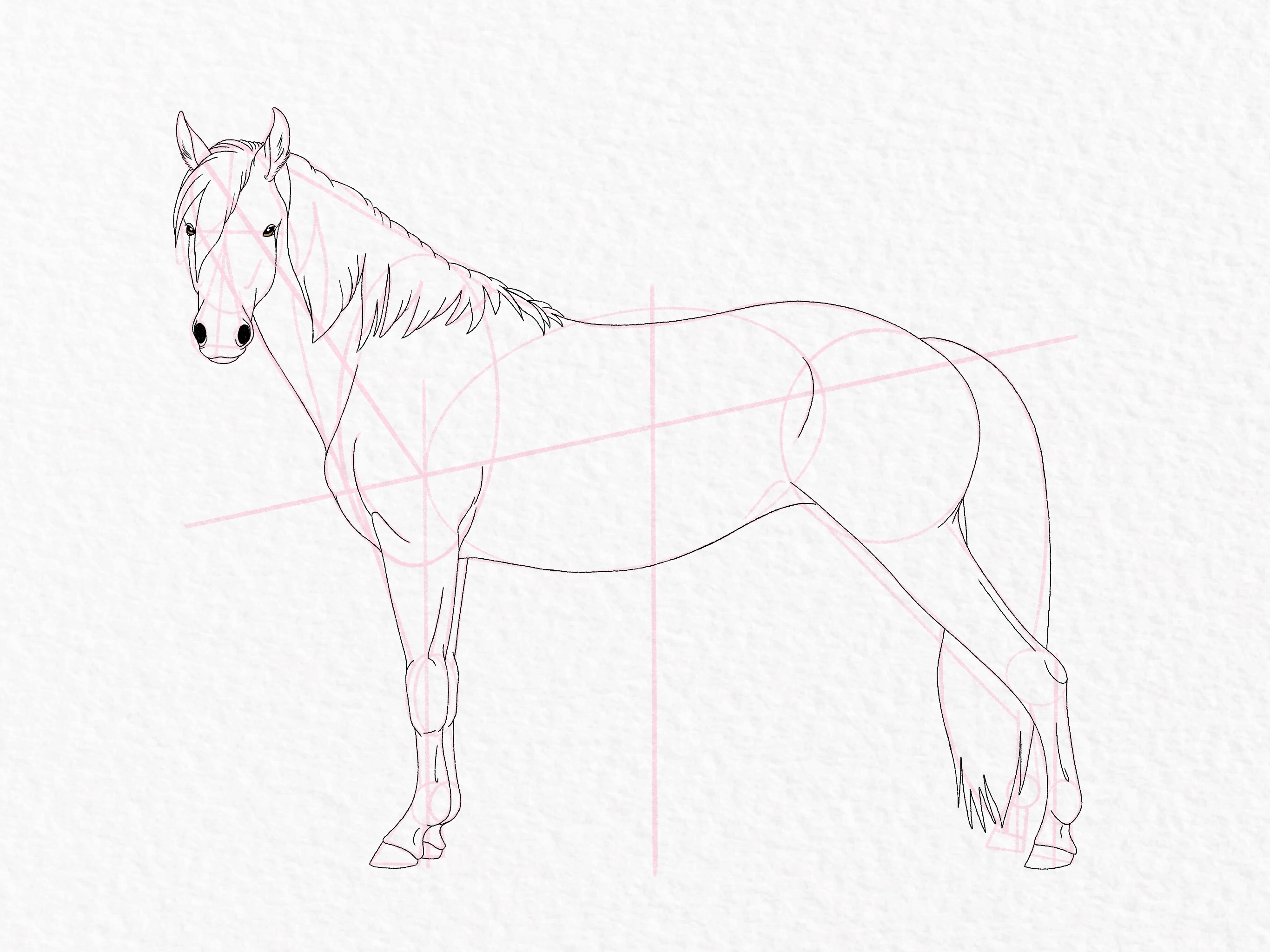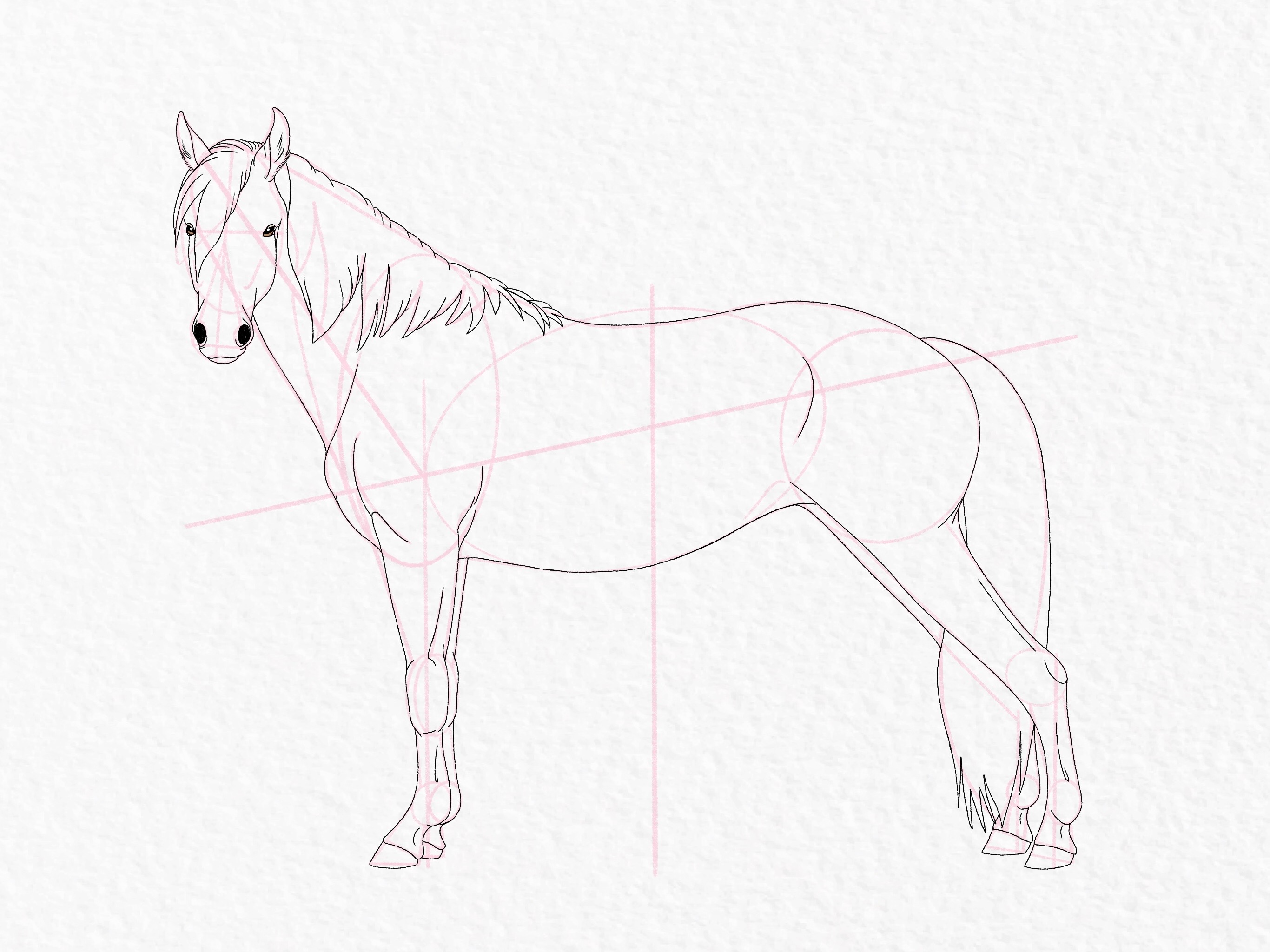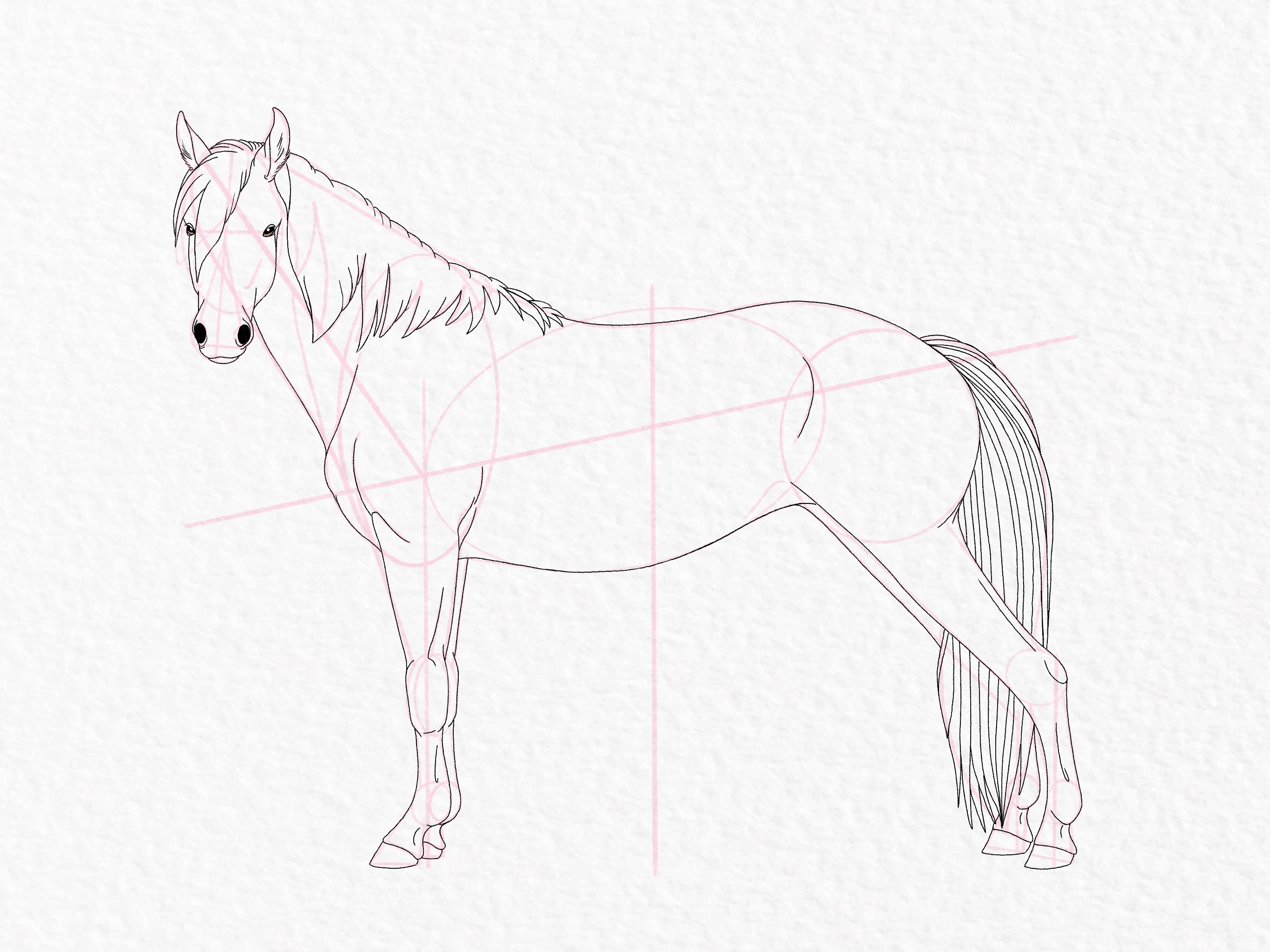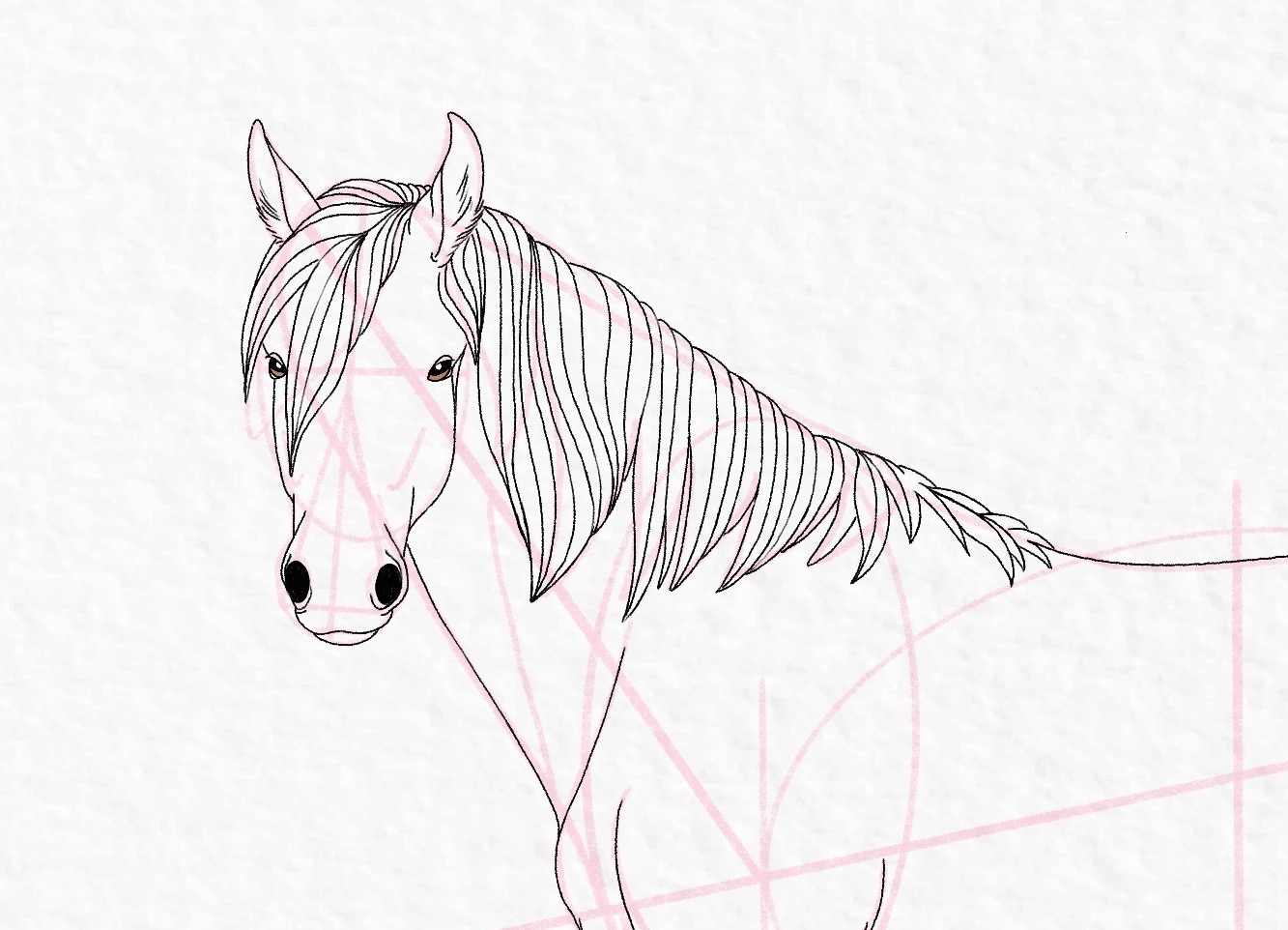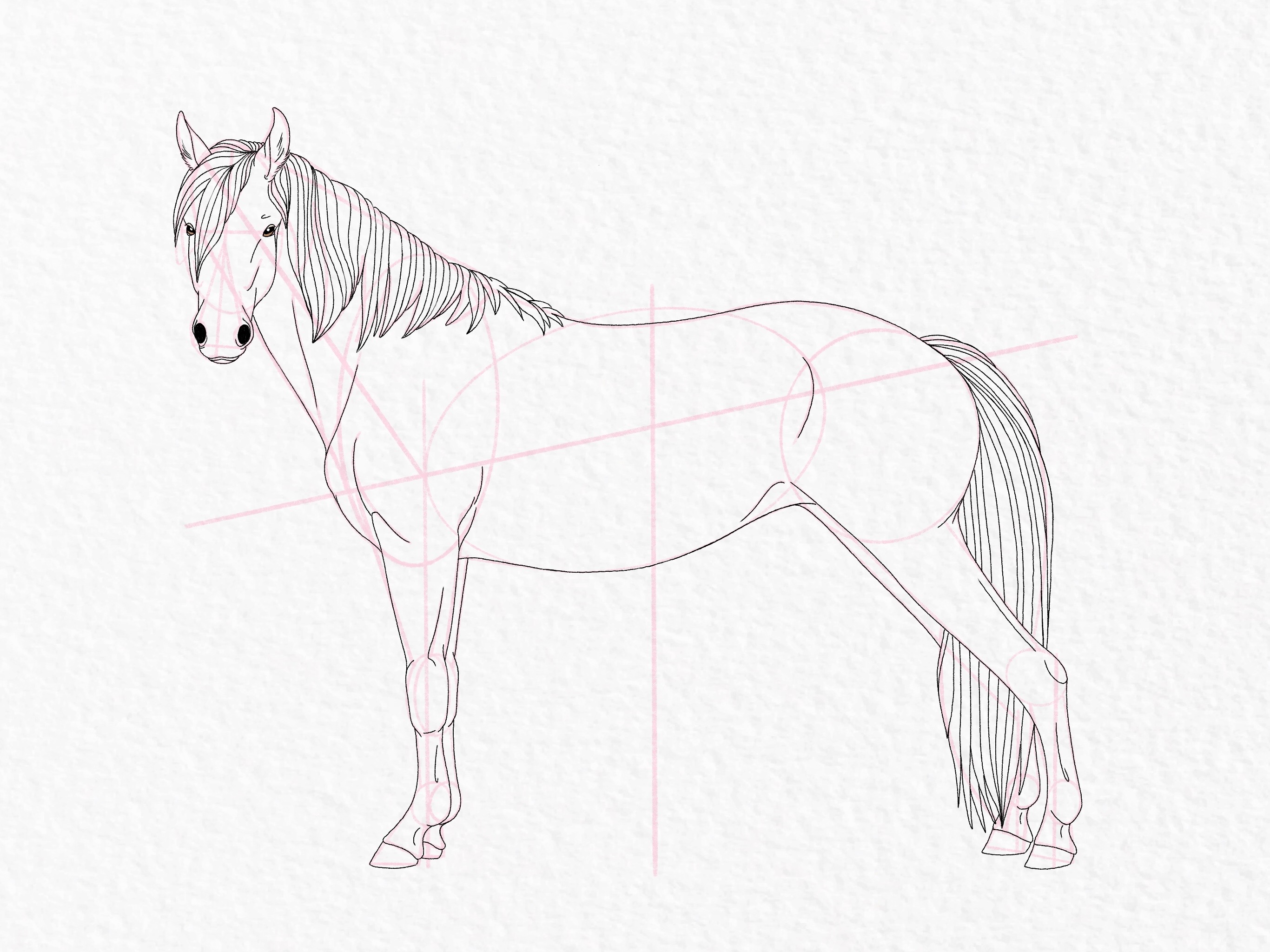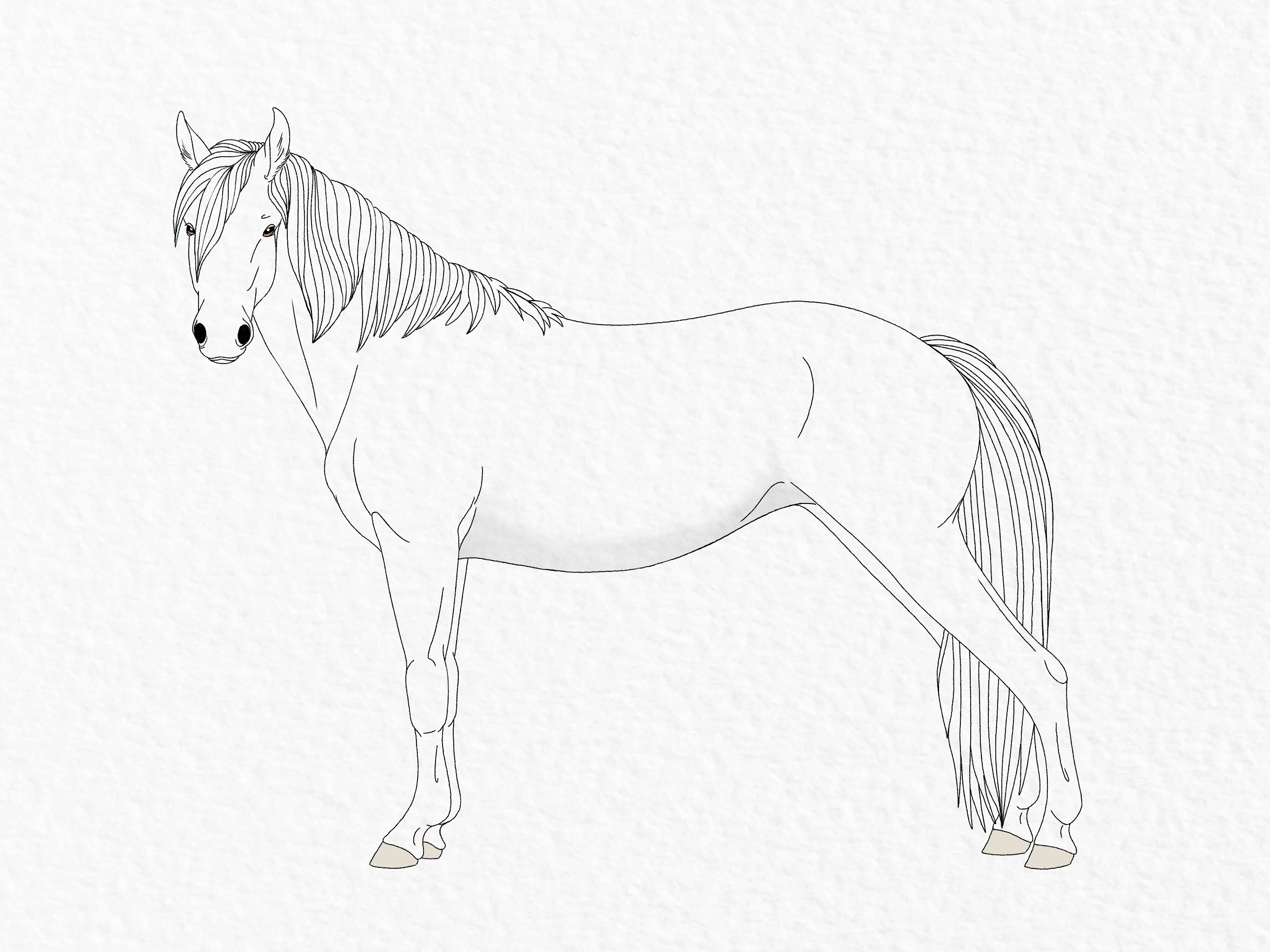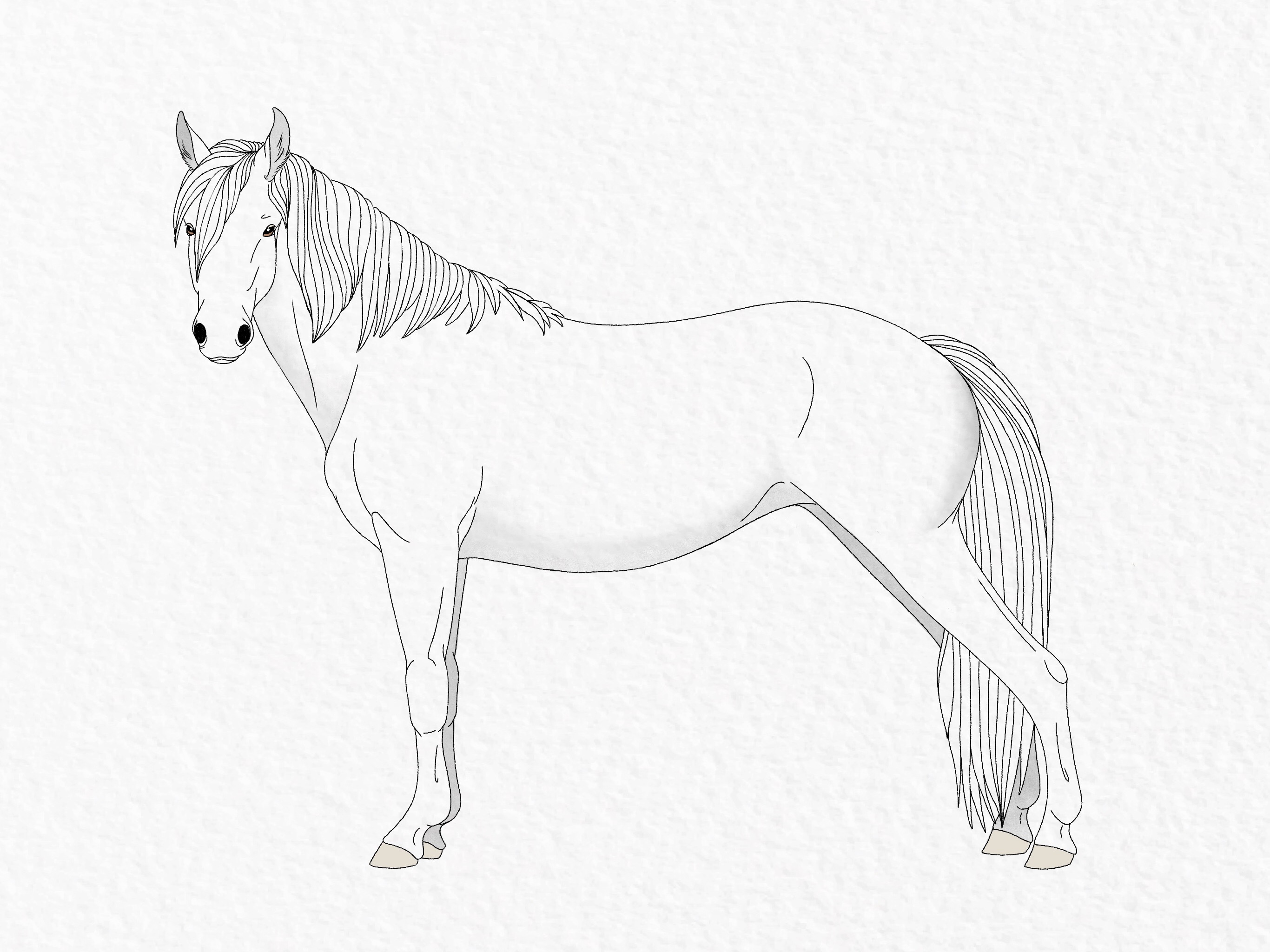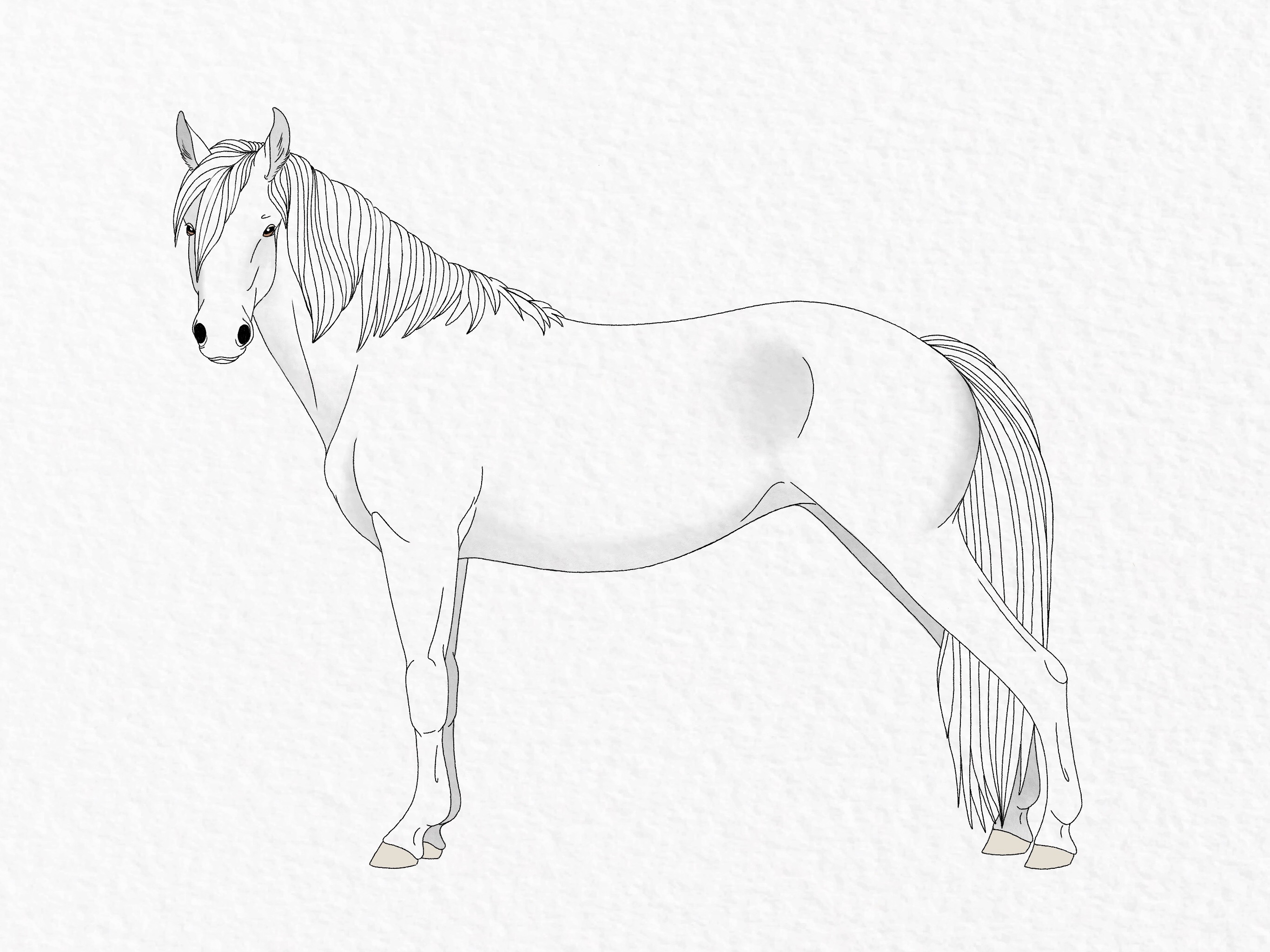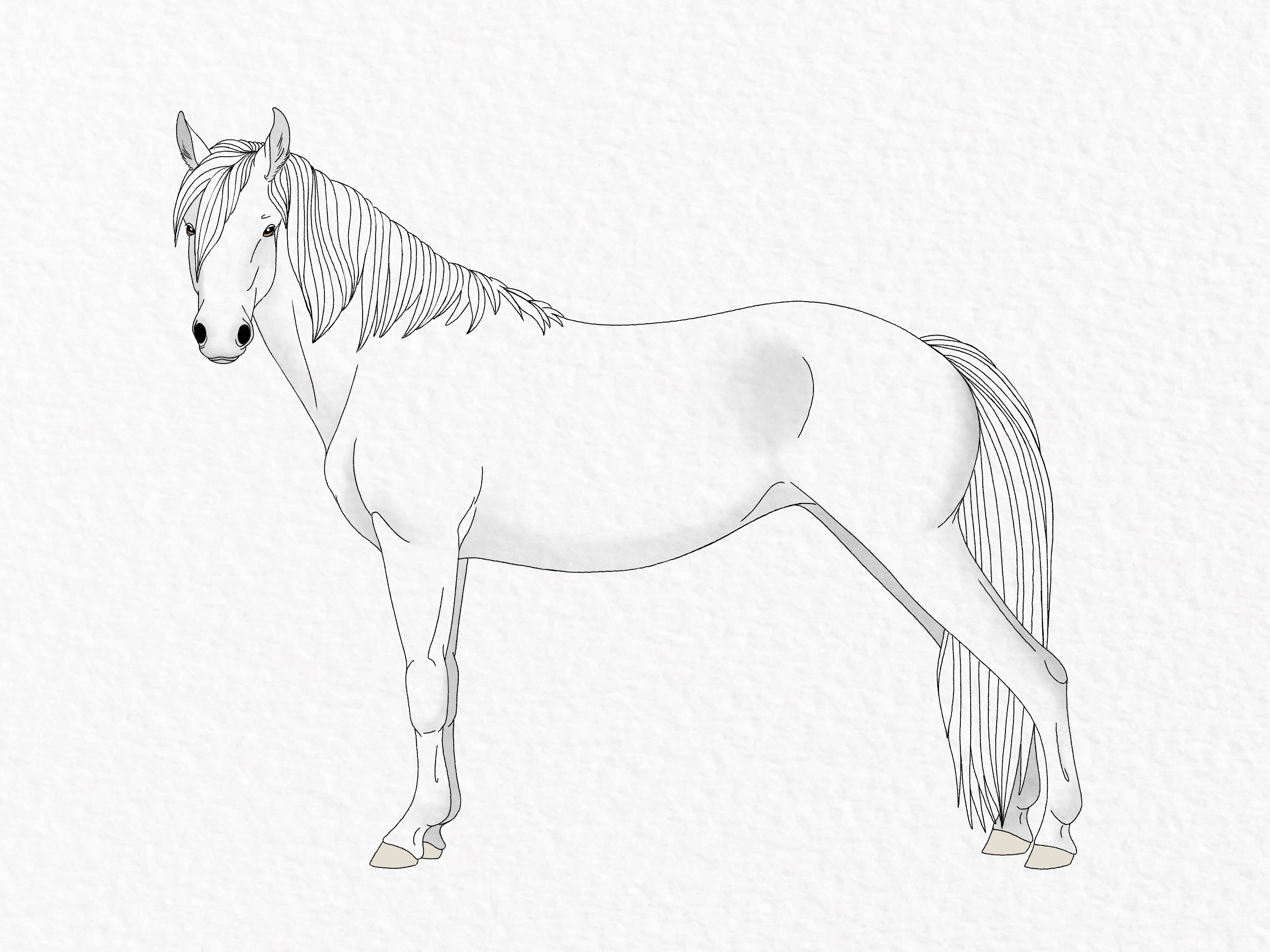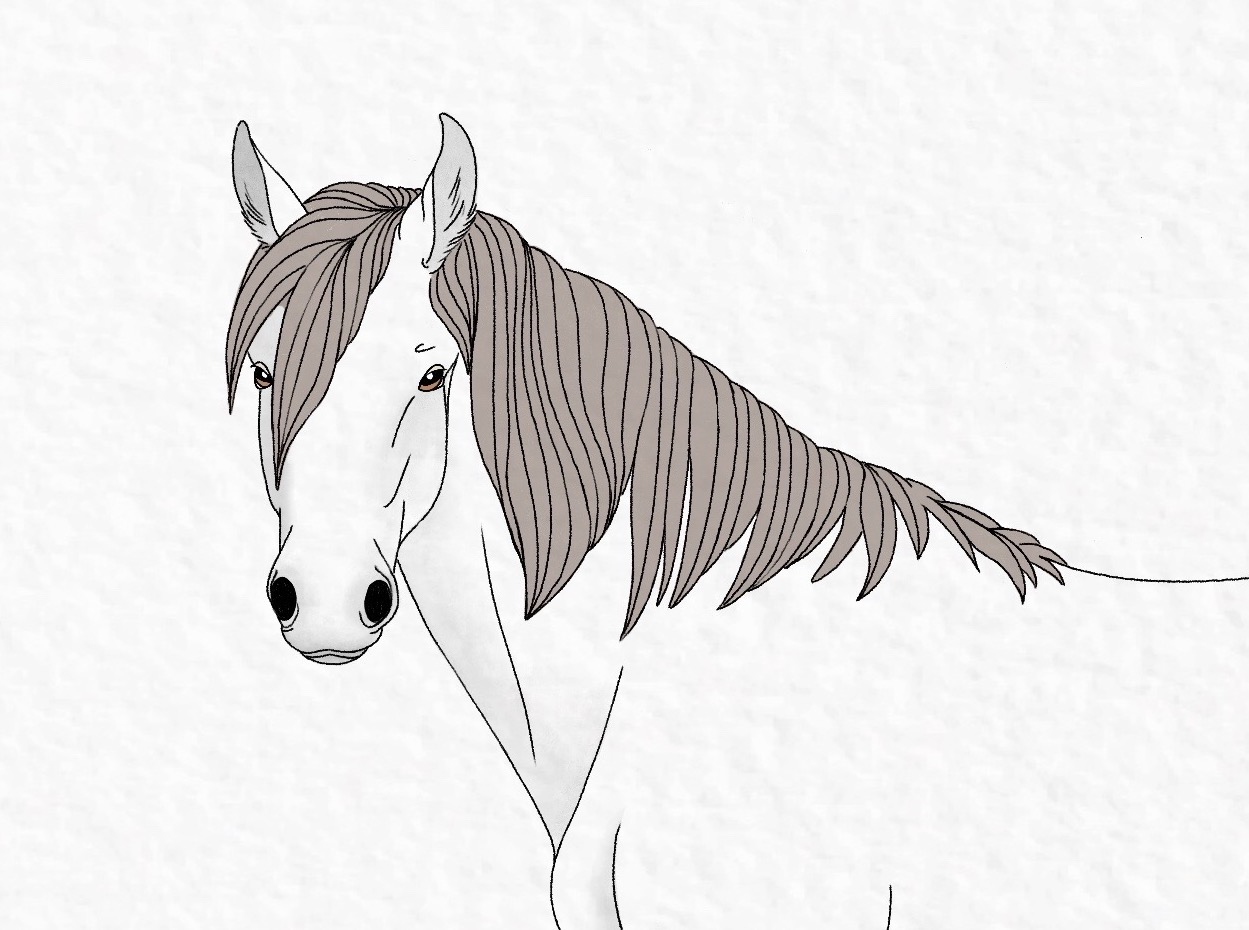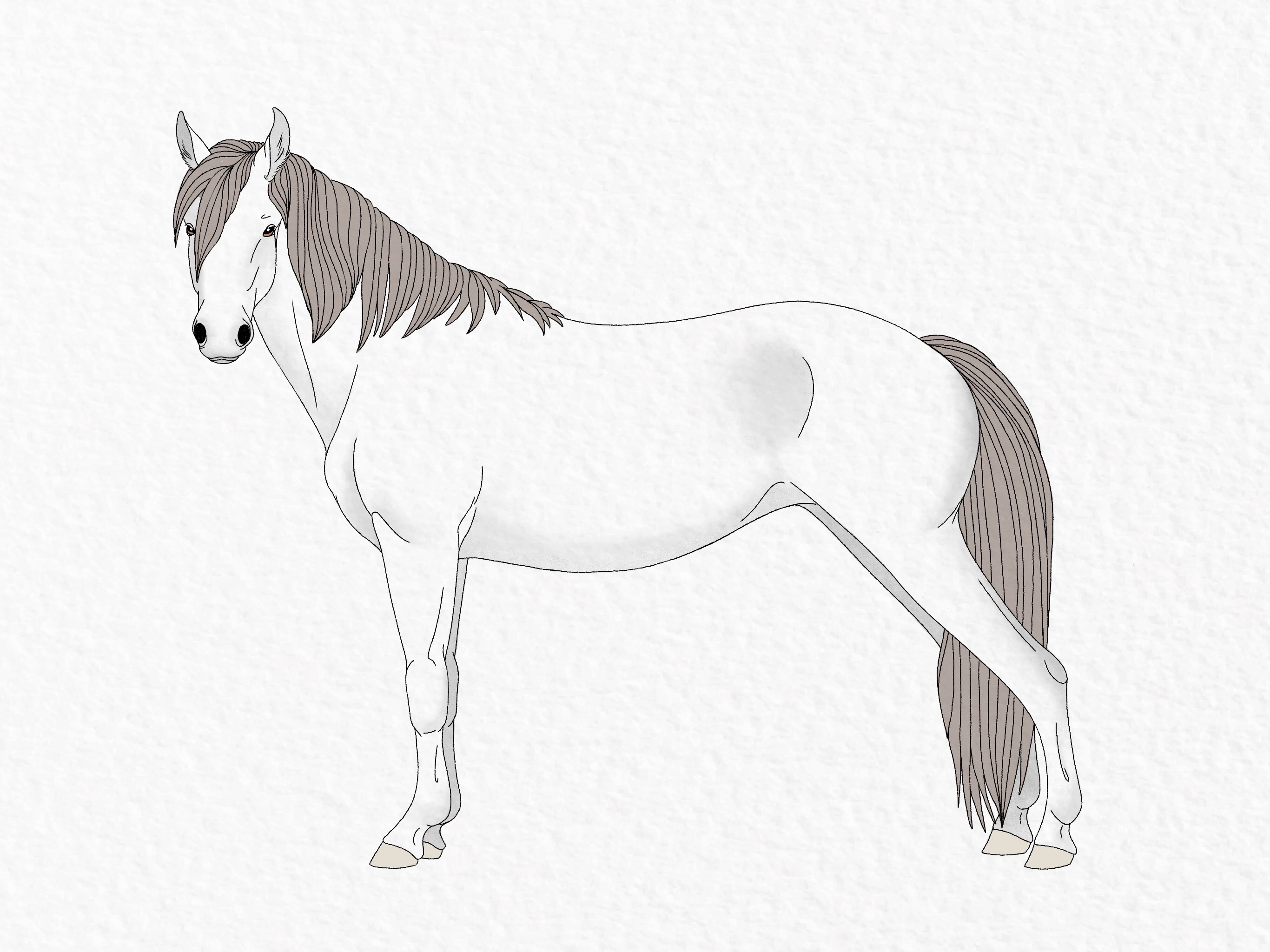Horses feature in some of the oldest known artworks. For millennia, we have been drawn to their speed, strength, heart, and loyalty, so it’s only natural that ancient humans wanted to immortalise them on cave walls. Today, they continue to capture the imagination, and we’ve put together this easy horse drawing tutorial so that you can learn how to draw your own.
In this fun and easy-to-follow step-by-step tutorial, we show you how to build up the form of a horse using basic shapes, share expert advice and walk you through the steps needed to build up the detail on your horse. Once you’ve completed this horse drawing tutorial, use some of the techniques you’ve learnt and apply them to other horse poses, or even other animals.
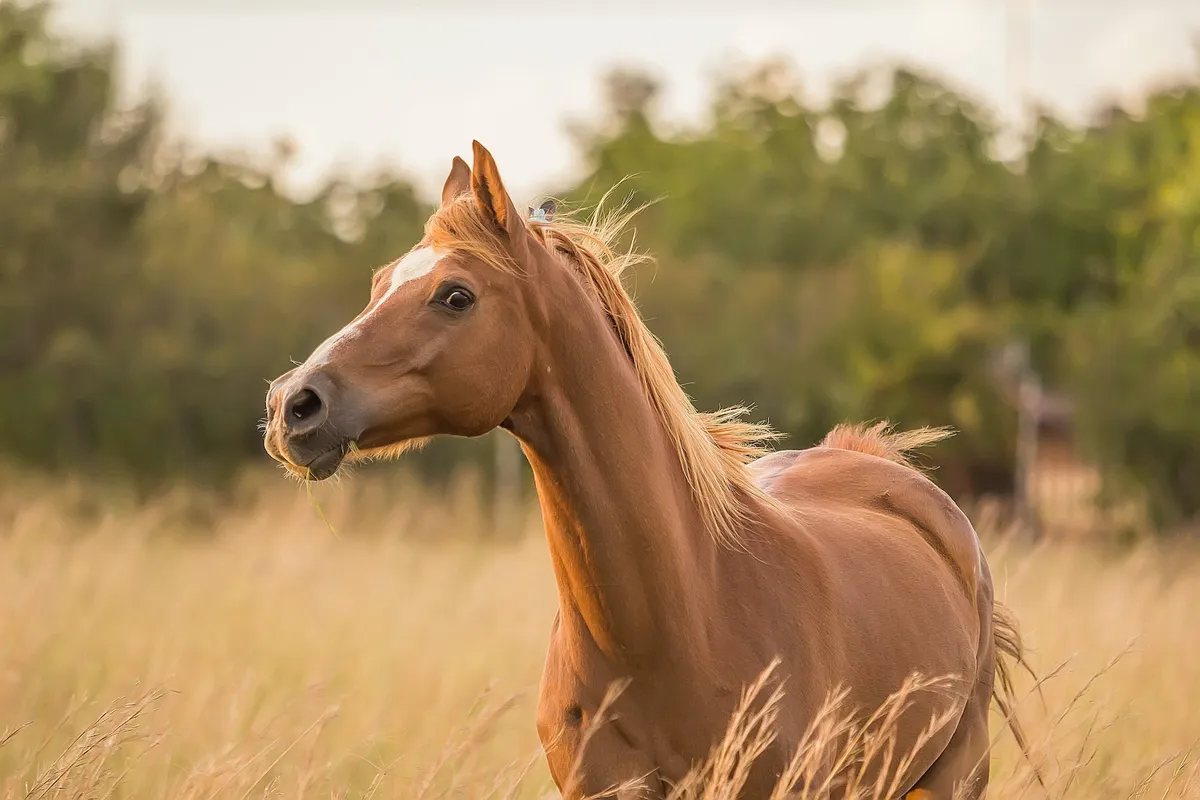
If you’re new to drawing, we think you’ll enjoy our pencil drawing for beginners and best drawing pencils guides – they’ll help you get started. Looking for more drawing projects? Check out these adorable step-by-step guides, how to draw a cat and how to draw a dog with artist Matt Breen.
Our art editor, Sarah Orme, has put together a series of useful guides to help you get the most out of your hobby. Learn how to use watercolour pencils, how to do ink drawing, or how about learning how to draw a tree step by step?
If you like the style we’ve used in this tutorial, you might like to have a look at how to draw a bird, and how to draw a tiger, both of which also have similar step-by-step tutorials.
We love seeing what you create, so don’t forget to share your art projects with us on Instagram, Facebook or Twitter, too!
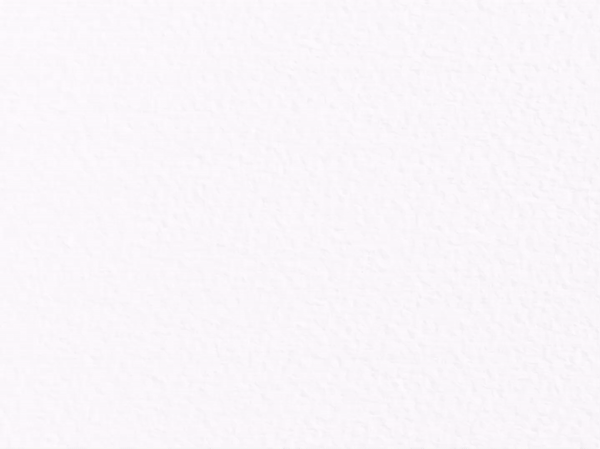
Top tips for drawing horses
- The first step to drawing horses is to break down the subject into (very) rough shapes. It’s important to check proportions at this stage. Only press lightly with your pencil, as these lines will be erased later on.
- If you want to keep a record of your construction lines for future reference, use a coloured pencil to mark out the initial planning stage. This way they're easily distinguishable from the final details.
- Once you've planned out the form and proportions of the horse with basic shapes, smooth the lines between the shapes to join them together. Don’t add detail at this stage – if your proportions are still out, you’ll find yourself erasing your hard work.
- Then, refine the head and neck. These are prominent features on the horse, so keep checking the proportions against your reference photo.
- When you come to drawing the legs, draw the joints (knees and ankles) first as rough circles. This helps your horse look more realistic and helps with the contouring of the legs.
- Once you’re happy with your basic shape, go over the outline with a harder pencil or fine liner.
- Once you have mastered this horse drawing tutorial, why not try speed sketching horses? Aim to fill the page quickly, and construct your horses from basic shapes, like circles, ovals and curves. You’ll soon get a feel for the proportions, and it’s a lot of fun, too.
- If you’re drawing horses from a photograph, choose a photograph where all parts of the horse are unobscured, and one where the lighting is decent enough to fall on the contours.
- In general, horses have: a thin head, thick chest, thin legs, narrow (ish) waist and a fairly decent-sized rump.
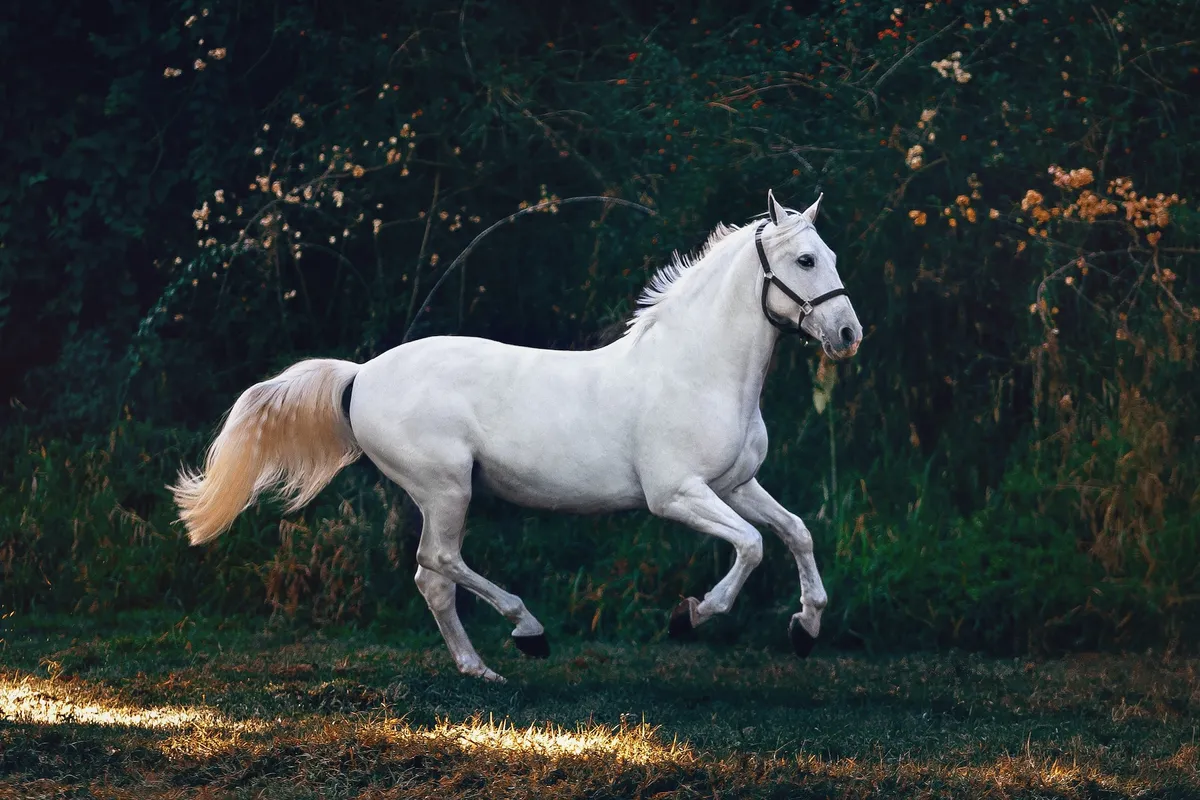
- If you have a museum nearby, this is a fantastic place to get some ‘real life’ sketching experience, without the risk of them galloping away (unless you happen to be in the American Museum of Natural History at night…).
- Drawing from life can be a challenge thanks to the constant movement. However, it’s a great way to sharpen your drawing skills and get to know their form, so it's a great way to get in some practice if you can.
- If you’re keen to transform your simple horse drawing into a cartoon, try making some of the features more exaggerated. Make the eyes, head and mouth bigger, and simplify the body shape to make it appear more streamlined.
To draw a horse you will need:
Technical pencil

Lightly sketching the rough shapes that make up your horse is a great way to build confidence in sketching the overall form of the animal.
A simple technical pencil, like these ones from Faber-Castell will do the trick. This pack comes with three different thicknesses, 0.35mm, 0.5mm and the slightly thicker 0.7mm, each colour-coded so you can easily tell which is which. Not quite what you’re looking for? Check out our round-up of the best mechanical pencils for drawing, to find the best one for you.
Sketchbook (or paper)
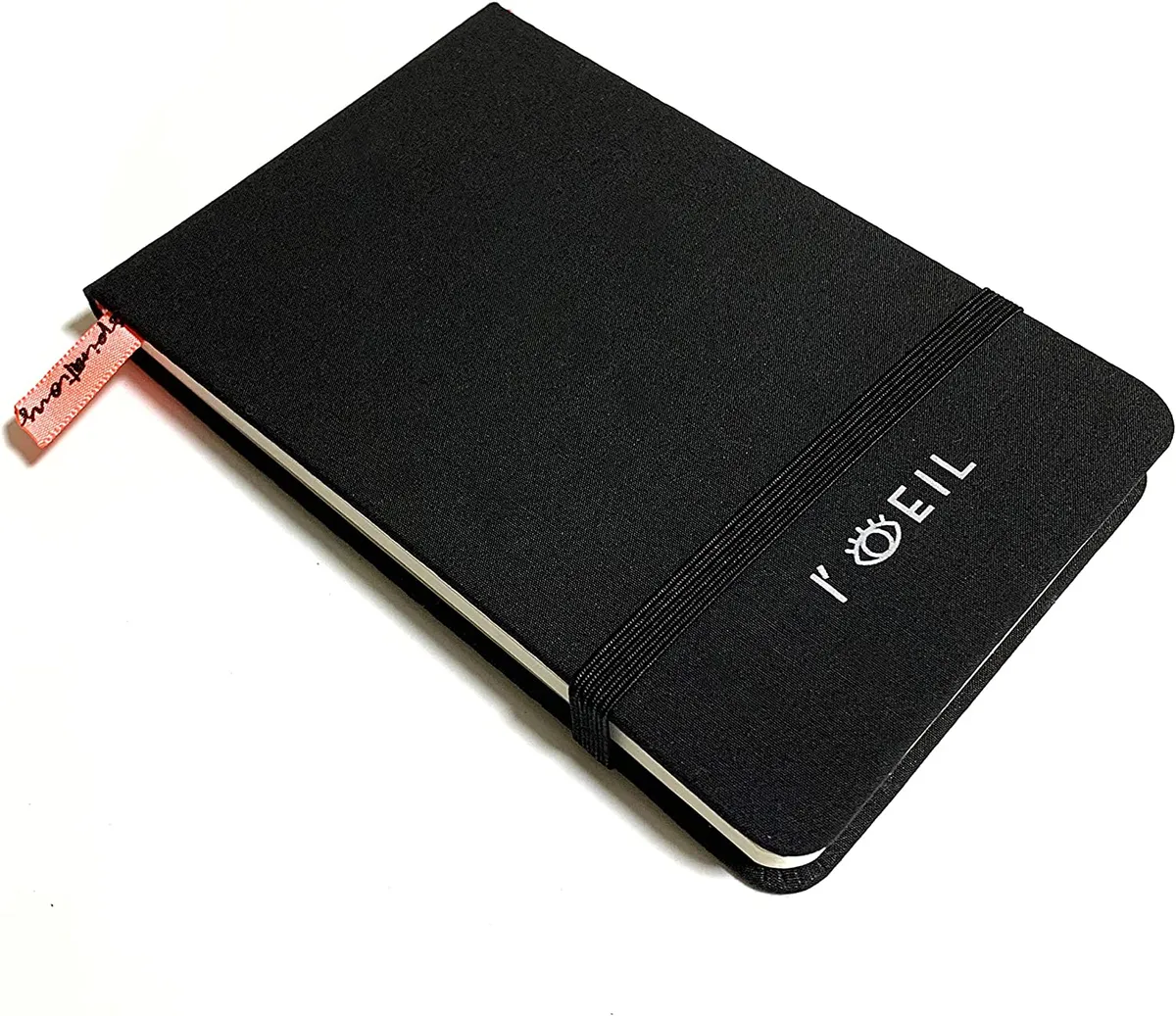
You can use any type of paper for this drawing tutorial, but we recommend something with a smooth grain. This makes erasing the construction lines easier, with a cleaner result. Be sure to experiment with different colour paper, sugar paper is good for this as it comes in an array of different colours and you can pick it up cheaply.
We love this mini sketchbook from l’oeil. It’s great for capturing animals, street scenes and people on the go. It measures just 9 x 14cm and comes with a durable cotton hardcover, so it’s ideal for throwing in a pocket or bag. It’s perfect for pencils, coloured pencils and charcoals, and it’s held together with an elastic band. There’s even a (neon) ribbon bookmark to keep your page, and an expandable pocket inside the back cover for scraps of inspiration you might want to keep. It’s a sturdy little sketchbook and the paper is of great quality, coming in at 150gsm in weight.
Eraser
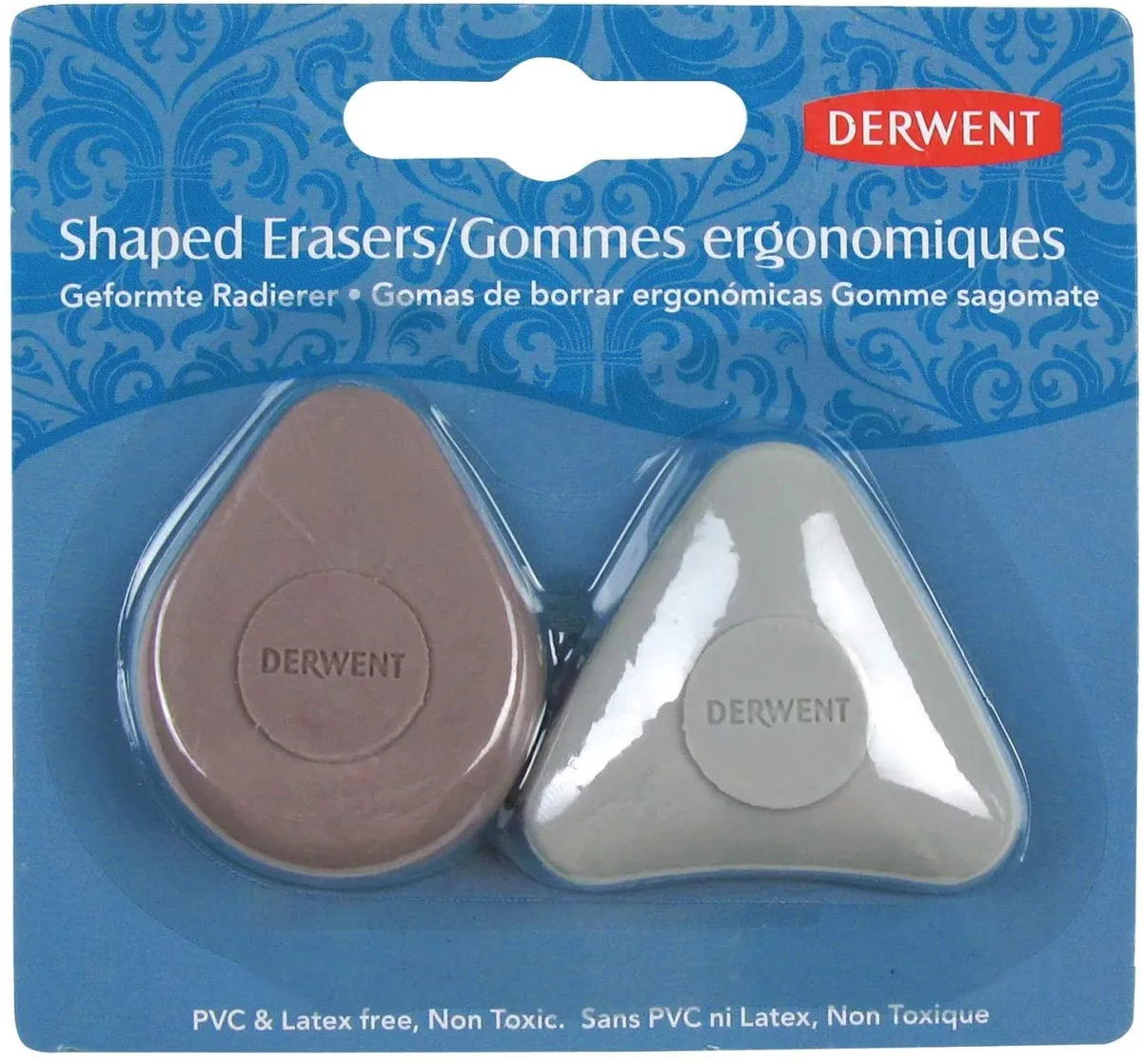
There’s something to be said for leaving the construction lines on your work. It’s loose, fun and messy. If, however you’d like to erase those lines, then I recommend using a hard, angled eraser, like these ones from Derwent.
Kneadable erasers are fine for certain types of drawing, but when you’re erasing large areas like in this horse drawing tutorial, you’ll want something that’s not going to roll itself into a sausage on the page. These ergonomic erasers are impressively smudge-free and shaped for a better grip. I really like them, and have several dotted around my craft room.
~or~
iPad
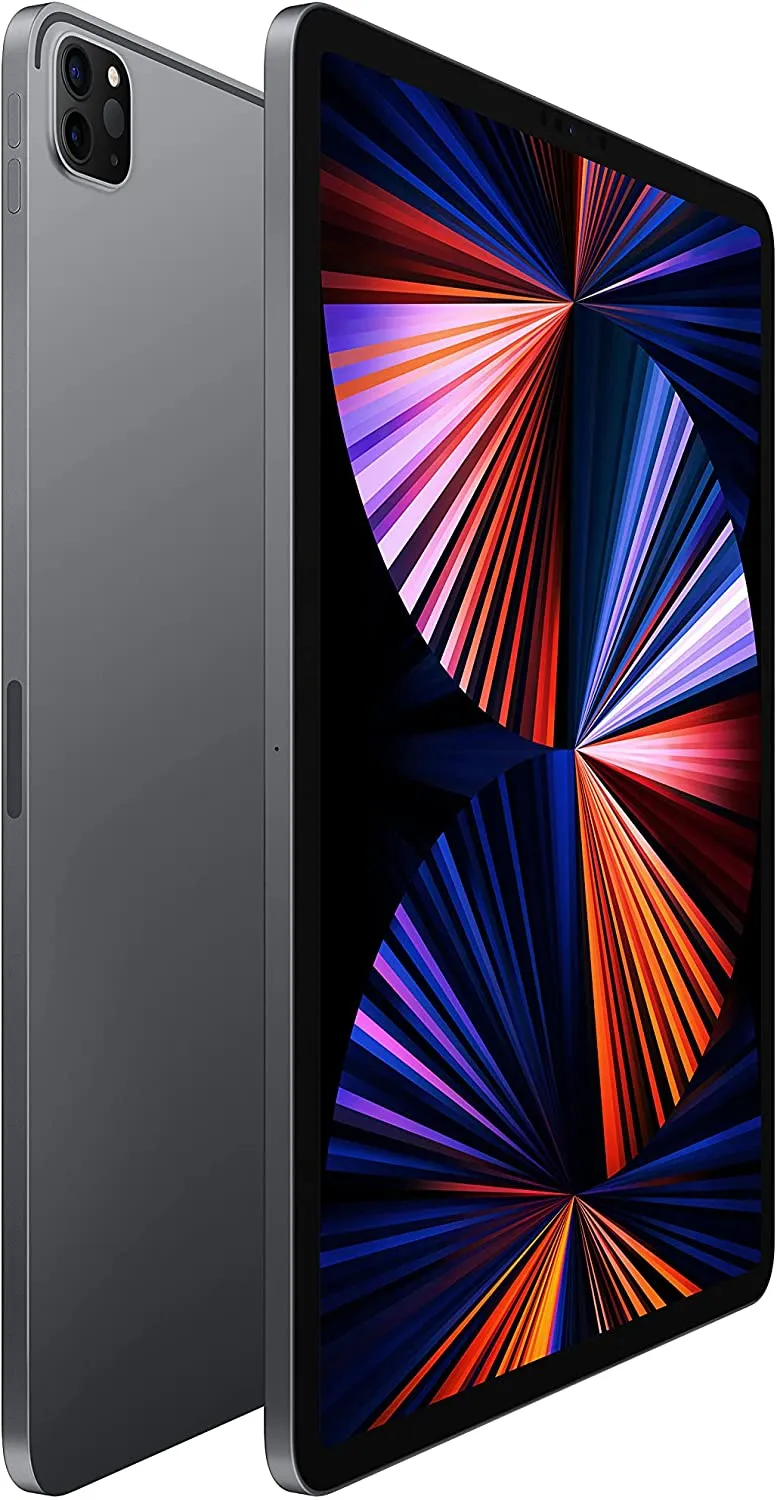
If you have the cash to splash and want to branch into digital art, the iPad Pro is a great option for drawing. However, the cheaper, "regular" iPads are just as good for the casual artist, it just boils down to how much storage you need and the types of apps you want to run.
Tech has moved quickly in the last few years, and operating systems are taking up more and more space – so keep this in mind if you’re looking to buy an iPad; as time goes on and you install more updates, the new OS will gradually take up more and more space. So, it’s worth opting for maximum storage from the off, if you can afford it.
Apple Pencil

The 2nd generation Apple Pencil has a new function - double-tap to switch between tools you need, which is very useful when switching between sketching and colouring. The upgraded apple pencil magnetically attaches to the iPad Pro, and charges wirelessly.
No more having to stick your entire Apple Pencil in the end of your iPad, and the magnet means you’re less likely to lose it. If you do happen to put it down on a flat surface, like your craft desk, the flat edges mean it’s much less likely to roll away than the original, so it’s always ready when you need it.
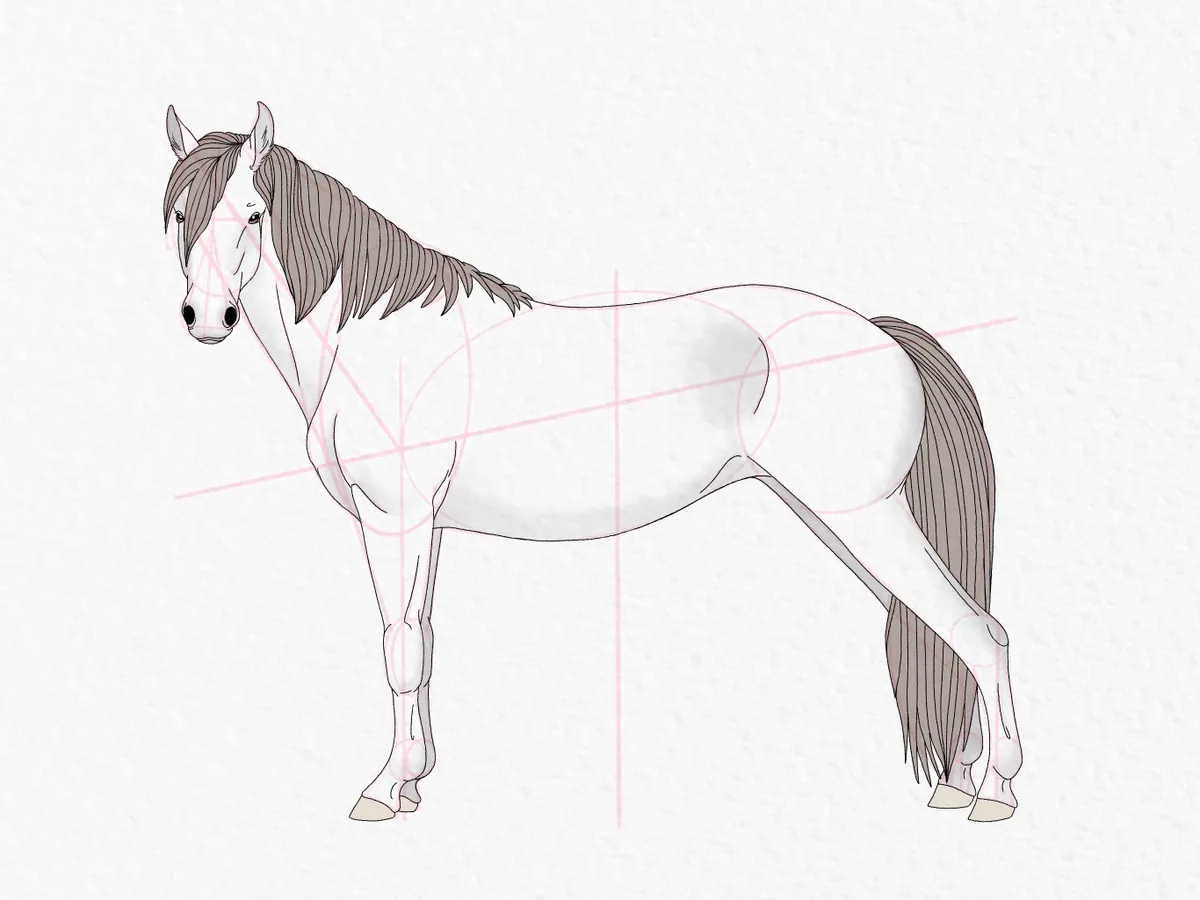
How to draw a horse
Follow this tutorial and learn how to draw a horse!
This in-depth horse drawing tutorial will take you from constructing the basic shape of the horse’s body to adding details, tail and mane. As this is a tutorial for beginners, we’ve used minimal shading, but you’ll see how just a little extra shading can make your horse leap into 3D and really pop from the page.
For the purposes of this horse drawing tutorial, we have used red to show clearly where the construction lines are, then lightened them when adding the detail on top.
Ready? Let’s go!
